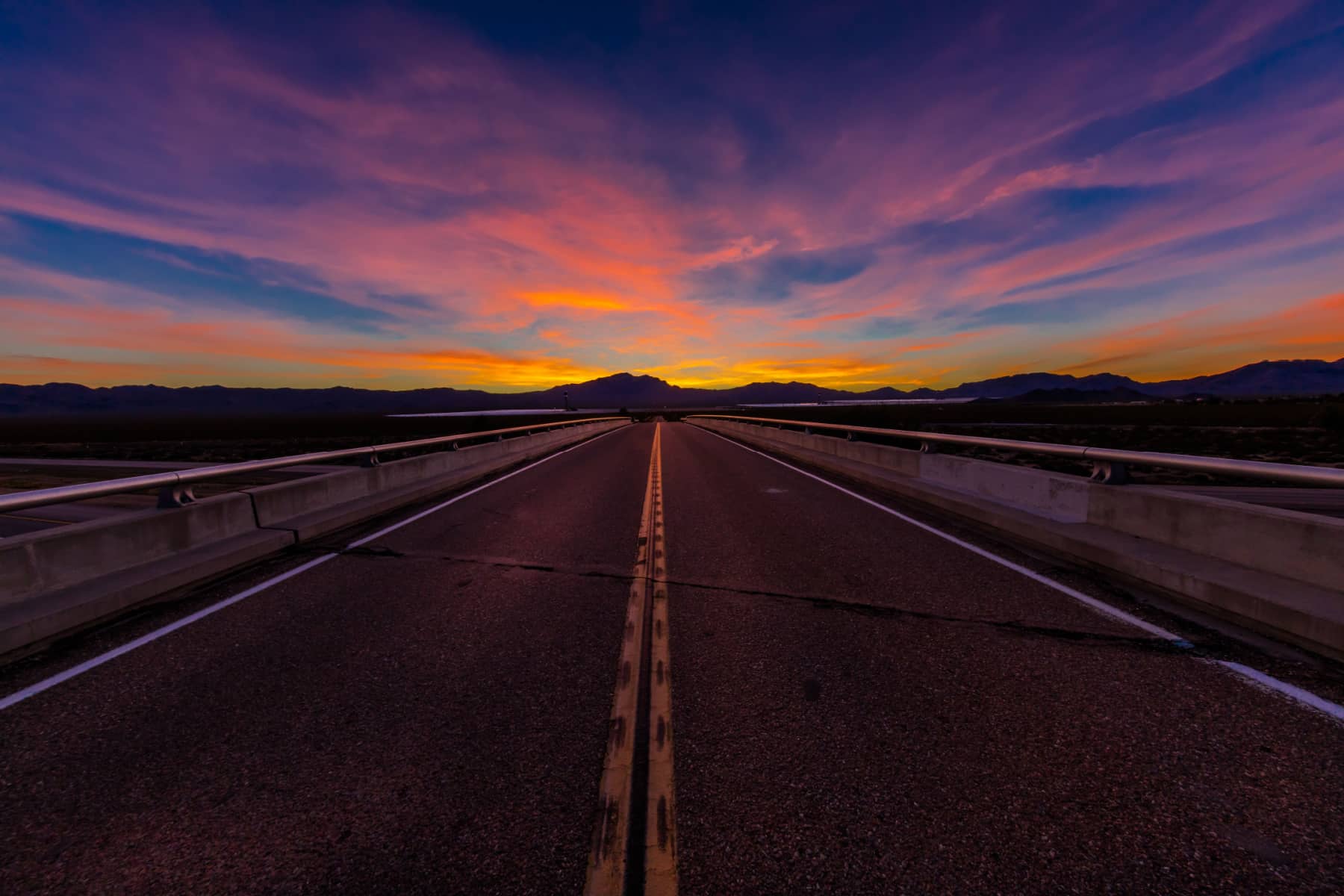
ARTICLE OVERVIEW: Dark Sky Park Road Trip from Las Vegas
One of the hottest travel trends of 2024 focuses on nightlife, but you won’t find a nightclub nearby. Since light pollution steals the spectacle of stargazing in most communities, Dark Sky Park road trips are the new after-hours party.
The Park to Park in the Dark Road Trip between Death Valley National Park and Great Basin National Park showers you with celestial showcases you just can’t get by Googling “stargazing near me.”
You need a cocktail of pristine night skies, low changes of clouds, and remote areas to get the most out of this after-hours extravaganza. The best part? The trip easily includes a start/stop in Las Vegas, Nevada.
Of all my outdoor experiences shared with you, this ranks as my favorite. Home means Nevada to me (IYKYK), and the desert skies blanketed with layers of stars, sparks of comets, and those elusive UFOs deserve the attention they area starting to get.
If you’ve ever wondered about Area 51, we’ll be driving right by there on this virtual Dark Sky Park road trip.
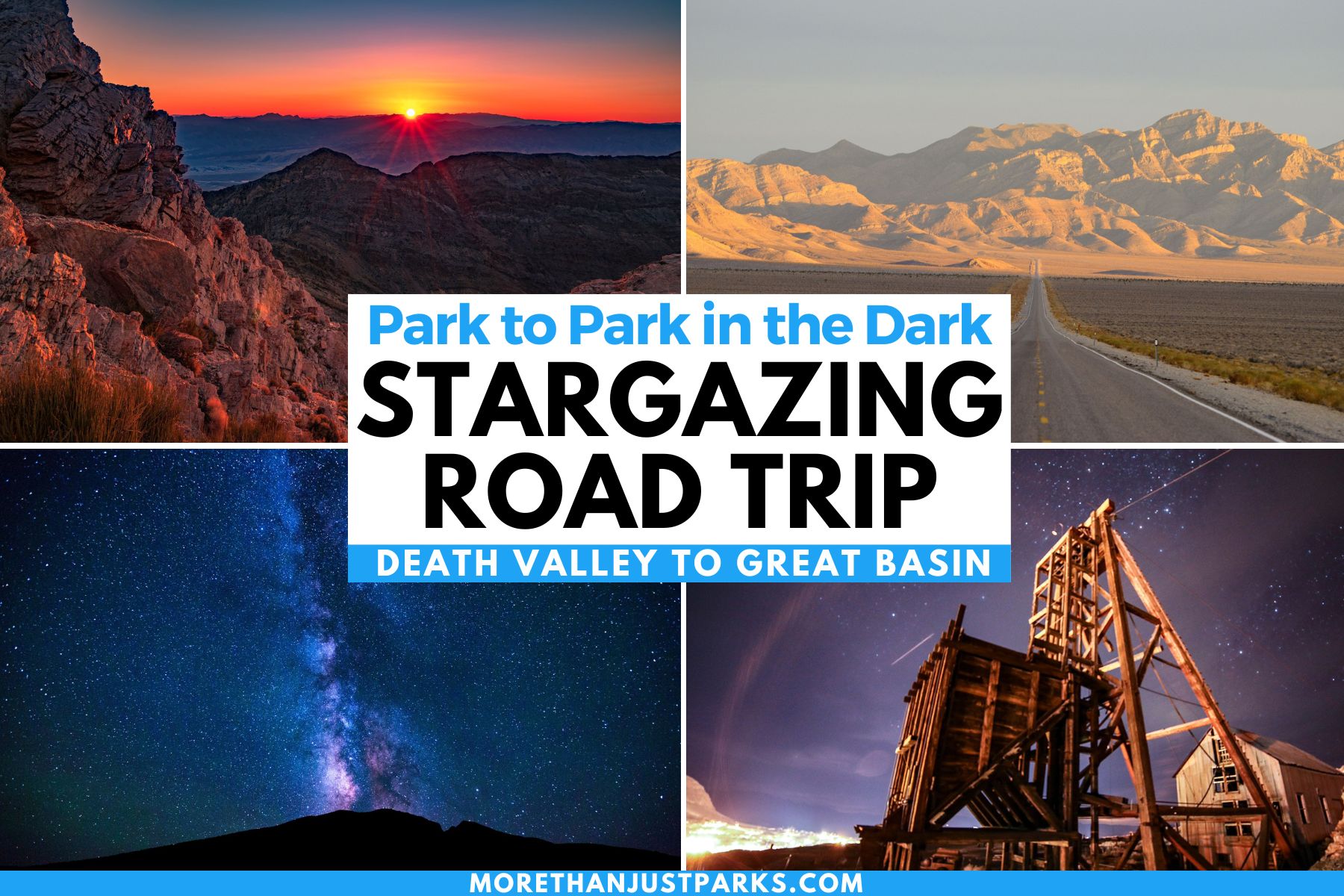
TABLE OF CONTENTS: Dark Sky Park Road Trip
Table of contents: Dark Sky Park Road Trip
- 6 Quick Planning Tips for the Dark Sky Park Road Trip
- What is Astrotourism?
- What is a Dark Sky Park?
- The Park to Park in the Dark Road Trip
- How to Start the Dark Sky Road Trip
- Stargazing at Death Valley National Park
- WATCH: Death Valley Film
- Dark Sky Park Road Trip: Beatty to Tonopah
- Tonopah
- On the Road to Ely
- The Stargazing Fork in the Road
- Warm Springs to Ely on Dark Park Road Trip
- Ely Dark Sky Park Road Trip Stop Options
- Things to Do in Ely
- Baker: Gateway to Great Basin National Park
- Stargazing at Great Basin National Park
- Best Time for Park to Park in the Dark Road Trip
- Dark Sky Park Road Trip Return Trip
- Dark Sky Park Road Trip Final Stretch
- Helpful Related Links
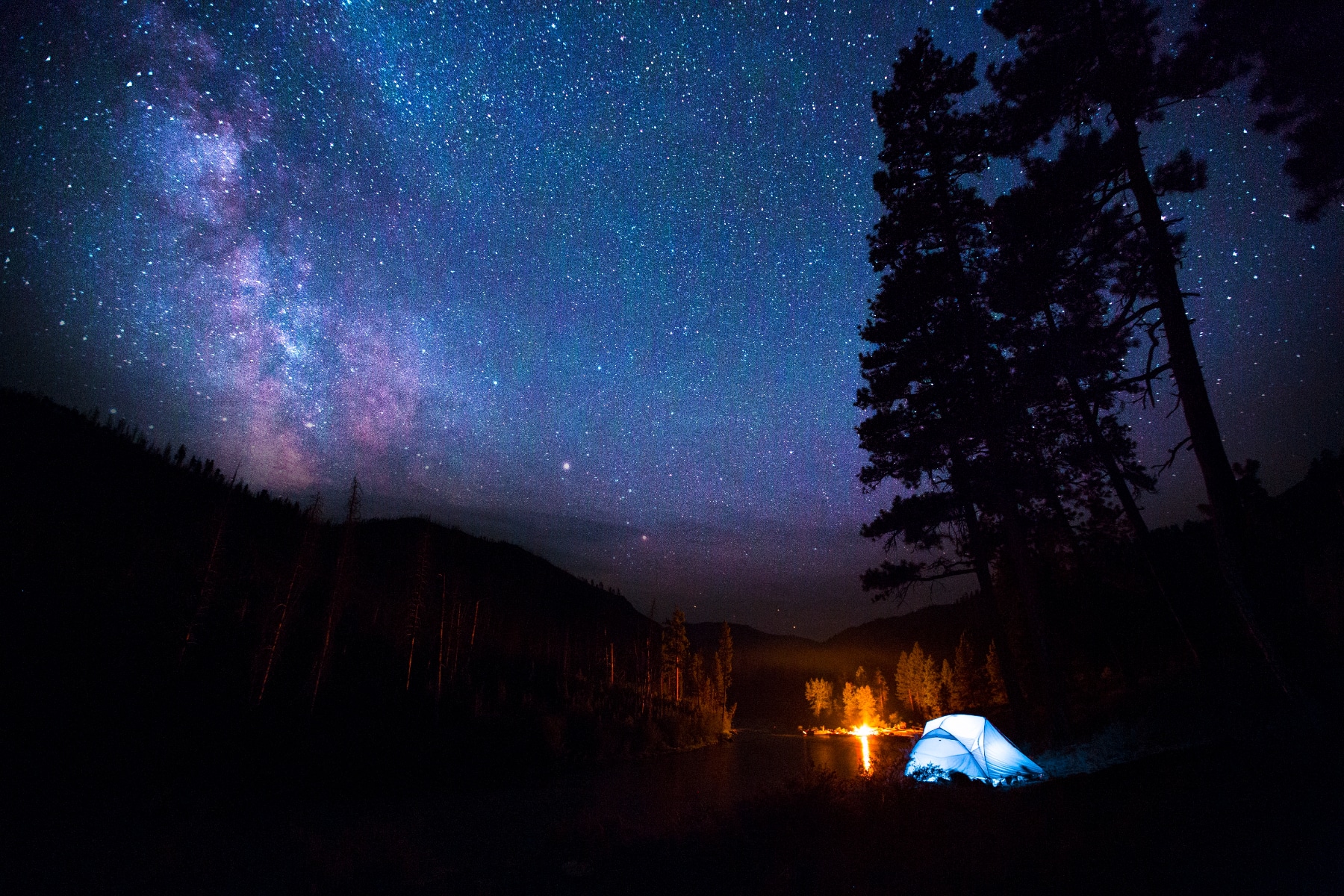
6 Quick Planning Tips for the Dark Sky Park Road Trip
- You’ll pass plenty of public lands on the way. It makes sense to purchase the America the Beautiful Interagency Pass so you can get access to any location.
- This road trip redefines the word remote. You’ll spend hours on empty roads without passing another car. The longest stretch without gas stations spans 170 miles. Stock up with water, food, blankets, a first aid kit, a spare (inflated) tire, and flares for roadside assistance.
- The main Dark Sky Park Road Trip is on paved roads, but several off-roading options await in the desert. The average Corolla won’t be able to handle it. If you plan to go off-road, get a high-clearance four-wheel drive vehicle.
- Bring extra lights with you in the form of a red flashlight for stargazing and a black light to spot scorpions in the dark. For those taking photos with a mobile device, try this telescope that fits over the camera.
- The extremes of the desert mean everything from scorching hot daytime highs to chilly nights. Pack layers of clothing and bring a blanket. Mosquitoes are usually not a problem in the desert, but you might want an added lay of bug spray anyway. Sunscreen is a must for daytime activities.
- Those not used to the arid desert climate should apply lotion and lip balm often, with Vaseline or some type of lubricant in your nose to avoid nosebleeds. As someone who lived in the desert for decades, I tried just about everything out there. Forget the scented goodies and go with a deep moisturizing option like Nivea.
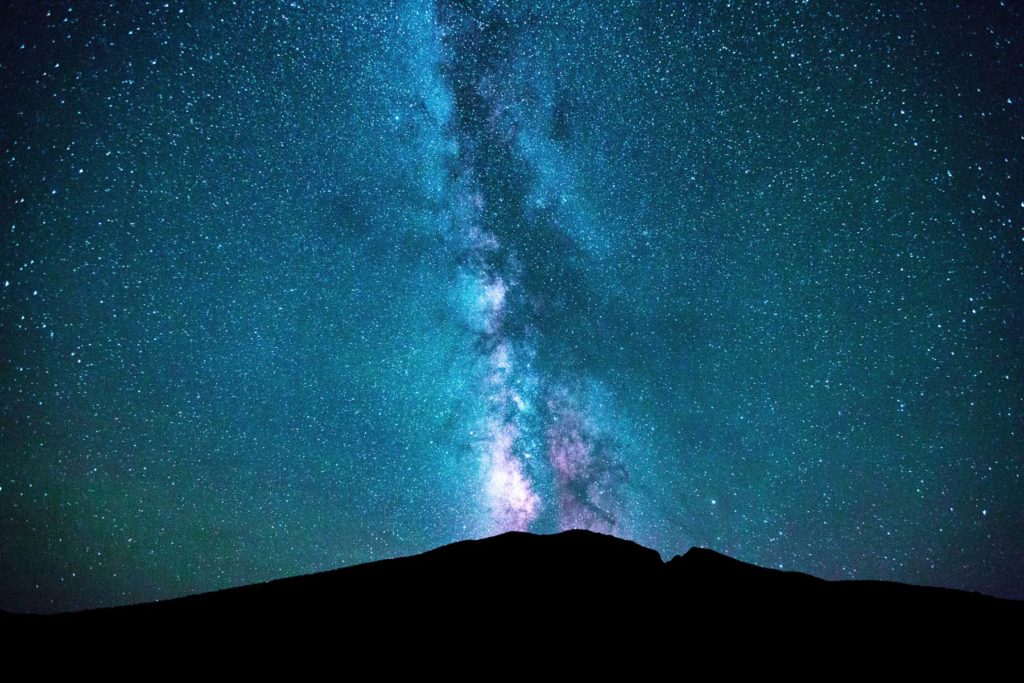
What is Astrotourism?
Astrotourism involves travel to destinations with exceptionally clear night skies for the purpose of stargazing or experiencing other astronomical phenomena. You want more than just seeing the stars; you want an immersive experience with stars wrapping around you like glitter.
Popular astrotourism destinations include deserts, mountains, and islands, as these locations typically have low levels of light pollution and unobstructed views of the night sky.
Some of the most popular activities for astrotourists include stargazing, meteor watching, aurora borealis (Northern Lights) viewing, and astronomy events.
But it’s more than that…
Reports vary but still offer a crushing statistic that anywhere from 80% to 99% of Americans either can’t see the Milky Way in the sky or live in a place affected by light pollution. Seeing the night sky through astrotourism or stargazing is a luxury requiring travel.
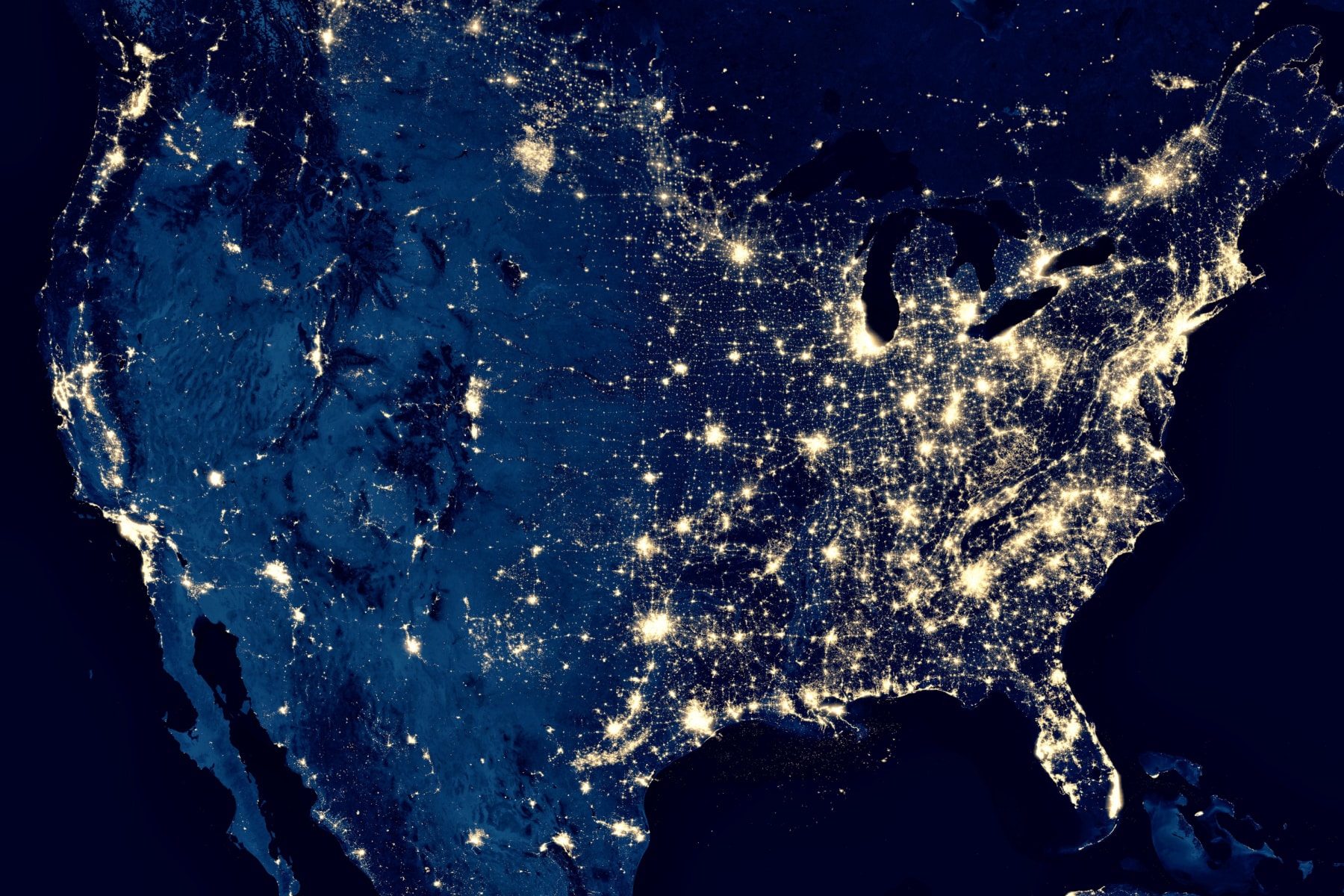
What is a Dark Sky Park?
A dark sky park is a designated area that actively protects and preserves the quality of the night sky by minimizing light pollution. These areas offer incredible opportunities for stargazing and experiencing the natural night sky, something becoming increasingly rare in our light-saturated world.
Certain criteria need to be met to get the International Dark Sky designation.
- Restricted lighting: They have regulations and policies in place to control artificial light sources, often using shielded lights or requiring a downward direction to minimize upward light leakage.
- Natural environment: They are typically located in remote areas with minimal development, further reducing potential sources of light pollution.
- Public education: They promote the importance of preserving dark skies and educate visitors about the negative impacts of light pollution on wildlife, humans, and the astronomical experience.
- Designated viewing areas: Many parks offer dedicated spaces with minimal light interference, often equipped with information boards and telescopes for optimal stargazing.
On the Park to Park in the Dark stargazing road trip, the path goes through Death Valley National Park, which was designated as an International Dark Sky Park in 2013. Its vast arid landscapes and low elevation naturally offer exceptional darkness.
Great Basin National Park earned its title in 2016. This eastern Nevada national park’s remote location and high mountains contribute to its pristine night skies.
These designations recognize the parks’ efforts to preserve darkness and provide visitors with unforgettable celestial experiences.

The Park to Park in the Dark Road Trip
This map shows an overview of the Park to Park in the Dark road trip from Death Valley National Park to Great Basin National Park, with marked stop options in between.
How to Start the Dark Sky Road Trip
You can fly into Las Vegas’s Harry Reid International Airport (LAS), formerly known as McCarran International Airport. From there, rent a car and start driving toward Death Valley.
Red Rock Canyon offers an incredible outdoor experience, with surprising dark skies considering how close it is to Las Vegas. Take the scenic 13-mile drive; just be sure to get a timed entry permit.
My favorite stargazing spot is the Late Night Trail, along the “hump to Pahrump” in Cottonwood Valley. The drive from LAS to Pahrump takes an hour. Stop for supplies and gas up here. Death Valley National Park is the next stop, about another hour away.
A potential side trip could involve Ash Meadows National Wildlife Refuge, home to the endangered pupfish and the largest Mojave Desert oasis. Devil’s Hole, where the pupfish live, snows a small opening over a hole at least 500 feet deep in a series of winding and unchartered underwater caves.
STAR TIP: If you’re really into astronomy, reach out to the Las Vegas Astronomical Society. They host Star Parties at the top of Mount Potosi throughout the year.
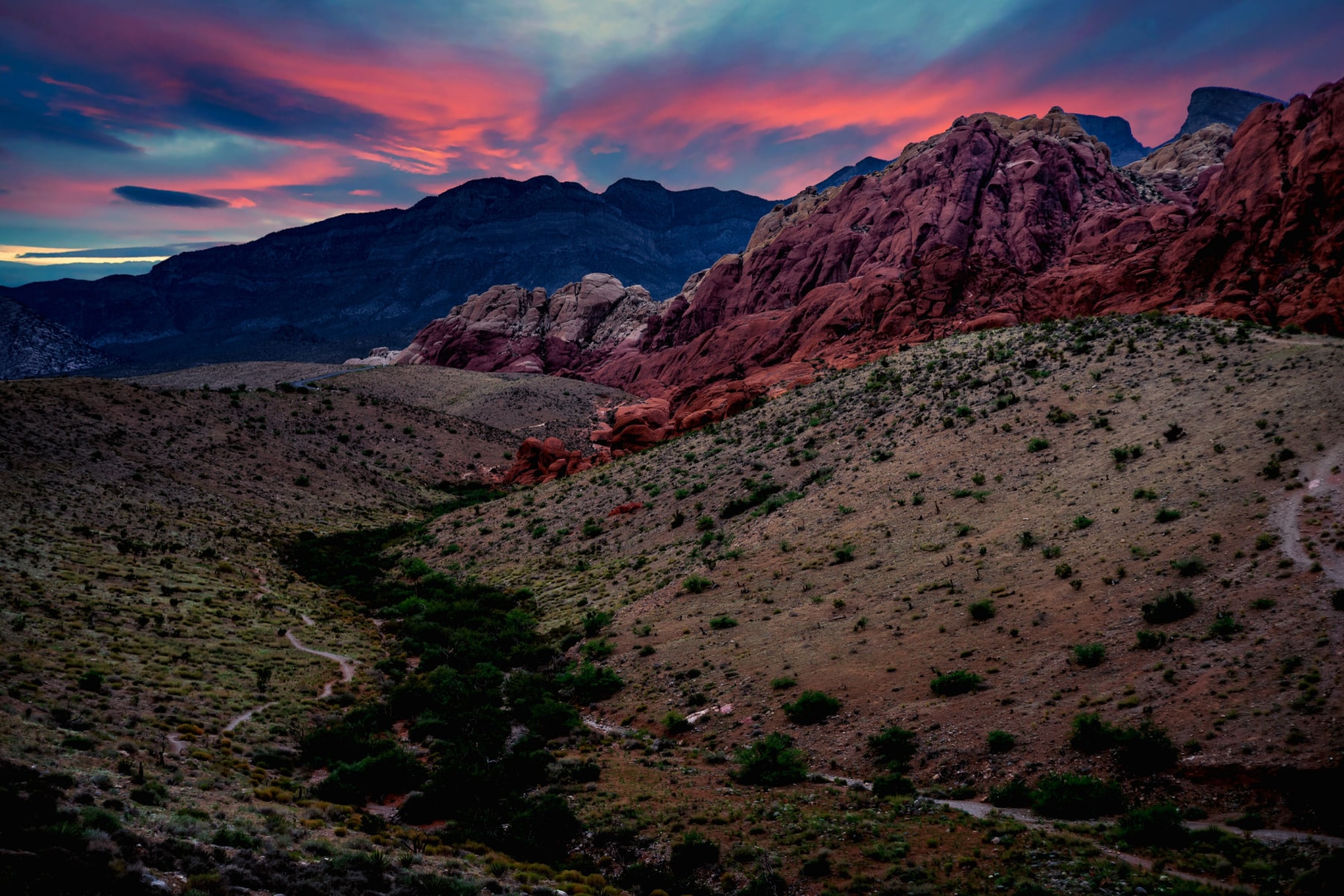
Stargazing at Death Valley National Park
TRAVEL GUIDES: Death Valley National Park Overview | Things to Do in Death Valley | 1 to 3 Day Itinerary
The official western end of the Dark Sky Park road trip is Death Valley National Park. Despite the intimidating name, the beauty beyond the blistering head and the famous low point in the country offer lively activities.
Death Valley boasts the title of a Gold Tier International Dark Sky Park, a testament to its unparalleled nighttime beauty. Unpolluted by artificial light, the heavens unfurl in their raw, breathtaking splendor. The Milky Way, a swirling river of stars, paints the darkness with its luminous dust, while constellations like Orion and Scorpius etch their familiar shapes against the velvet backdrop.
The best stargazing locations in Death Valley National Park are as follows.
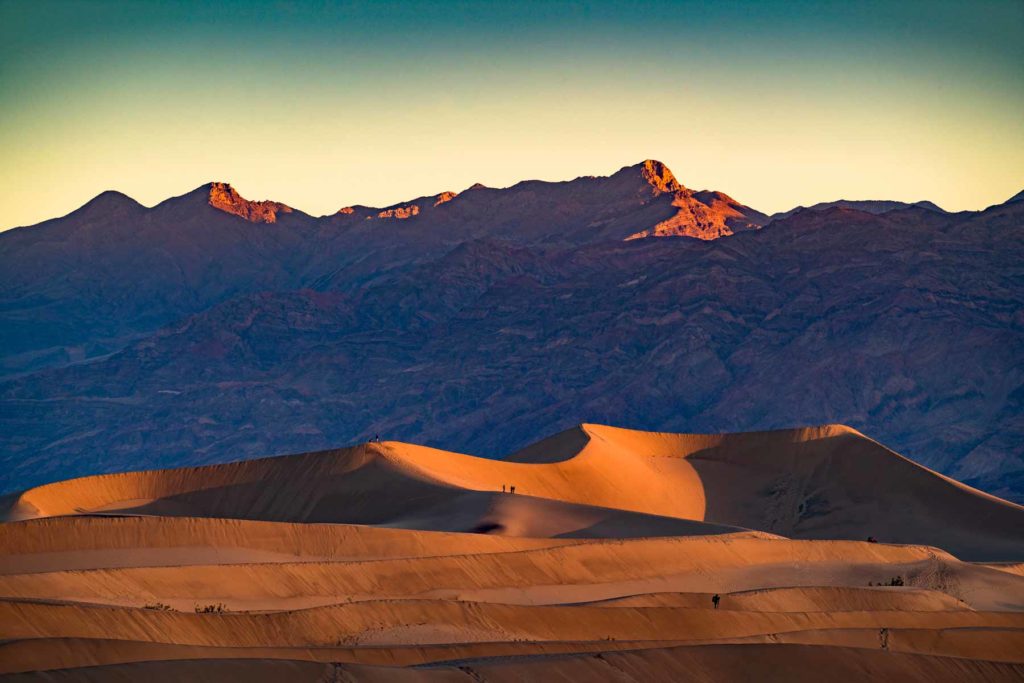
Mesquite Flat Sand Dunes
Wide-open skies and mountain vistas create a breathtaking backdrop for stargazing.
Harmony Borax Works
The ruins of an old borax processing plant add an eerie charm to the stargazing experience.
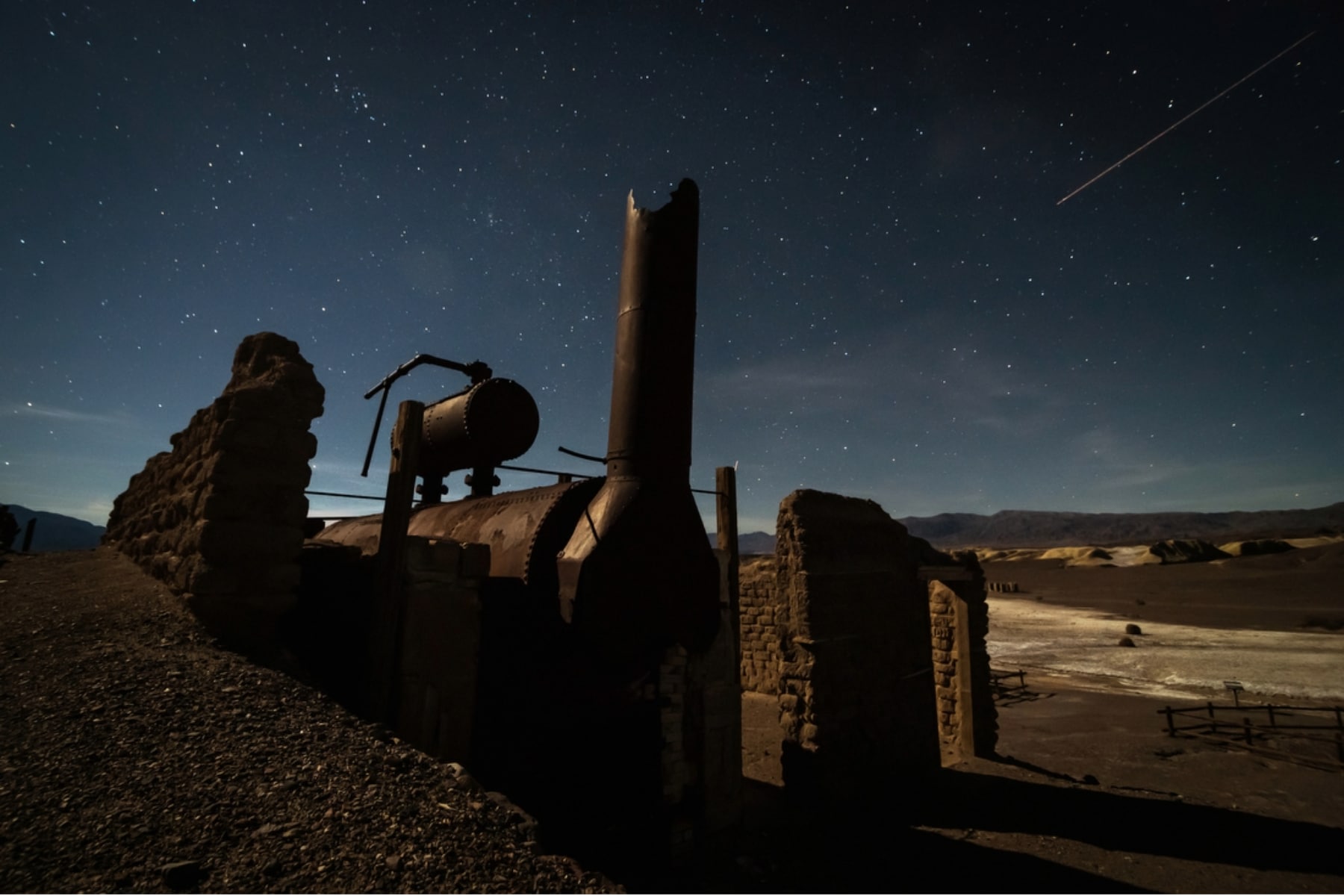
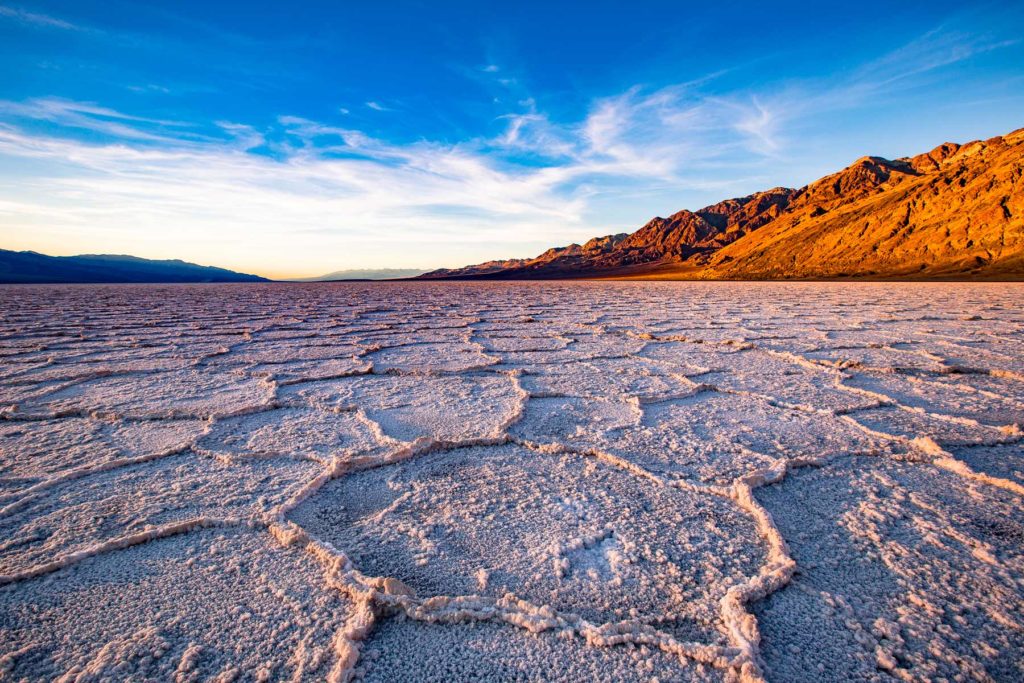
Badwater Basin
The lowest point in North America offers a unique perspective of the night sky.
Ubehebe Crater
A massive volcanic crater that provides a secluded spot for stargazing.

Death Valley Dark Sky Festival: March is one of the best times of the year to visit Death Valley, and that’s also when the annual Dark Sky Festival is held.
WATCH: Death Valley Film
Death Valley National Park Camping
Staying at a campsite in the park offers the most extended form of stargazing. Death Valley offers campgrounds and primitive backcountry sites. Between May and September, extreme heat limits the availability of campsites. Temperatures can easily stay in the upper 90s to triple digits for the daily low.
October through April brings the largest crowds and the most available campsites. Furnace Creek Campground accepts reservations; all others are first-come, first-served.
Enjoy climate control at the Inn at Death Valley, one of our favorite places.
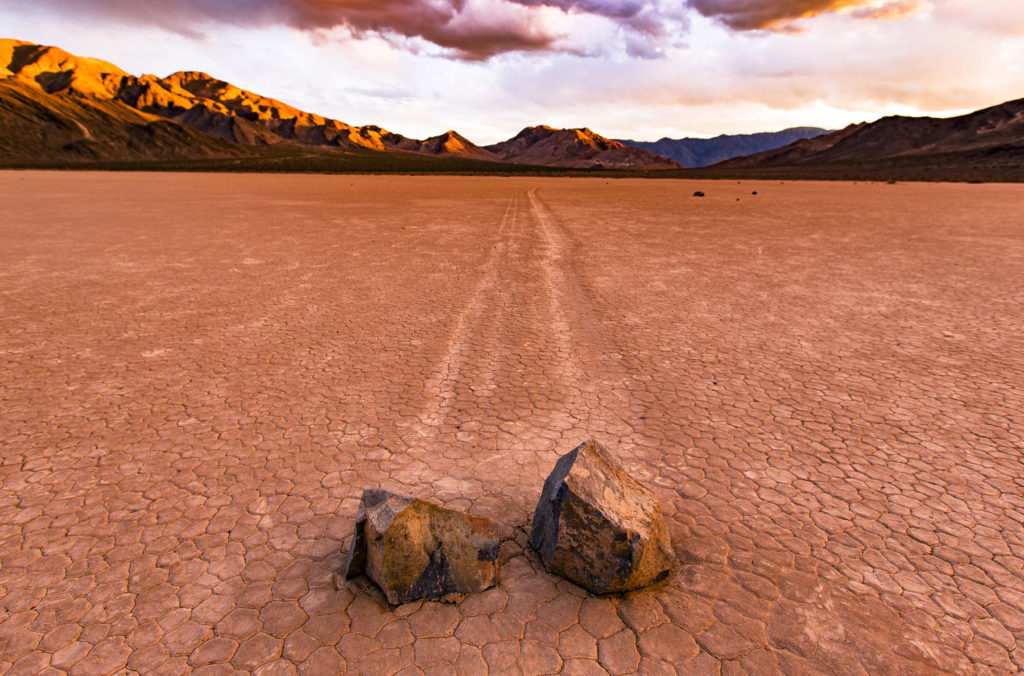
Dark Sky Park Road Trip: Beatty to Tonopah
After exploring Death Valley, you’ll take the 20-minute drive to Beatty (BAIT-ee) and pass some ghost towns along the way.
Ghost Towns
Explore the eerie ruins of Rhyolite Ghost Town, where art installations like the Bottle House stand amidst crumbling buildings. The Goldwell Museum near the site displays art in an “open-air” museum.
You might find some of the buildings seem familiar. That’s because this setting appeared in several movies, including The Island with Ewan McGregor and Scarlett Johannsen.
About 50 miles up the highway, Gold Point echoes tales of its gold rush boom and bust. The town has some (living) residents and a bed & breakfast, which offers more access to historic buildings. The remote location makes the stargazing epic among the unique landscape.
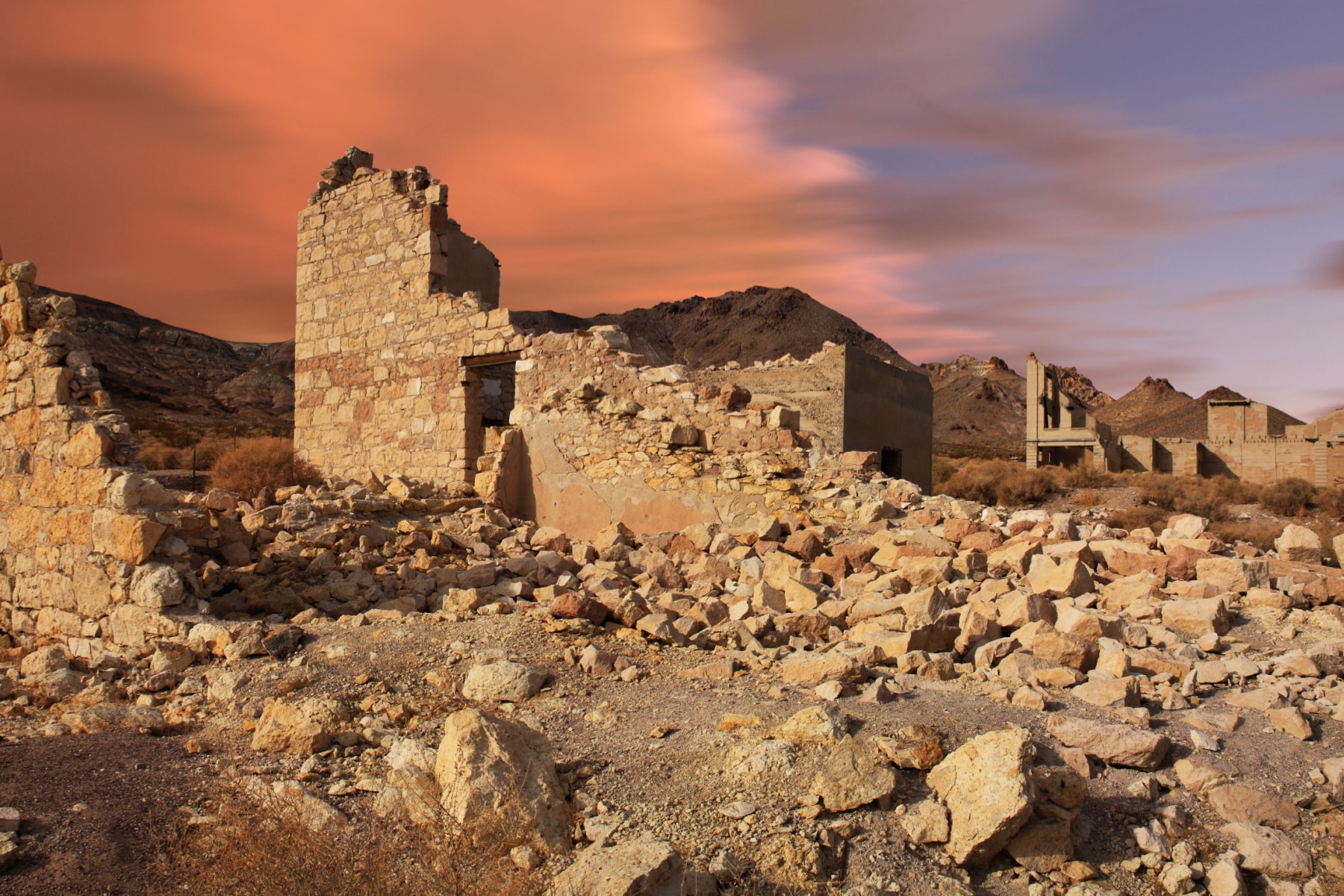
Goldfield’s Treasures
Some might say the road between Las Vegas and Tonopah is boring, but I’m here to set the record straight. Plus, I’m going to tell you about some hidden treasures (including literally hidden treasures, if you can find them).
Goldfield History
Goldfield boomed as a gold mining town, the largest in the state in 1909. Within 10 years, just 200 people lived there, and that’s about the population today. Driving through this ghost town takes you past one of the so-called “Scariest Places on Earth” at the Goldfield Hotel. You can’t tour it, but driving by might just give you goosebumps.
It’s worth noting that Goldfield is nearly 5,700 feet above sea level, much cooler than Death Valley. If you’re taking the Park to Park in the Dark road trip, Goldfield holds its annual festival each August. However, that’s a less-than-ideal time to visit Death Valley with the summer heat.
International Car Forest of the Last Church
Another thing that draws people to Goldfield is the International Car Forest of the Last Church. You’ll need to drive a dirt road to get there.
Stop by the Esmerelda County Visitor Center in Goldfield to get more information.
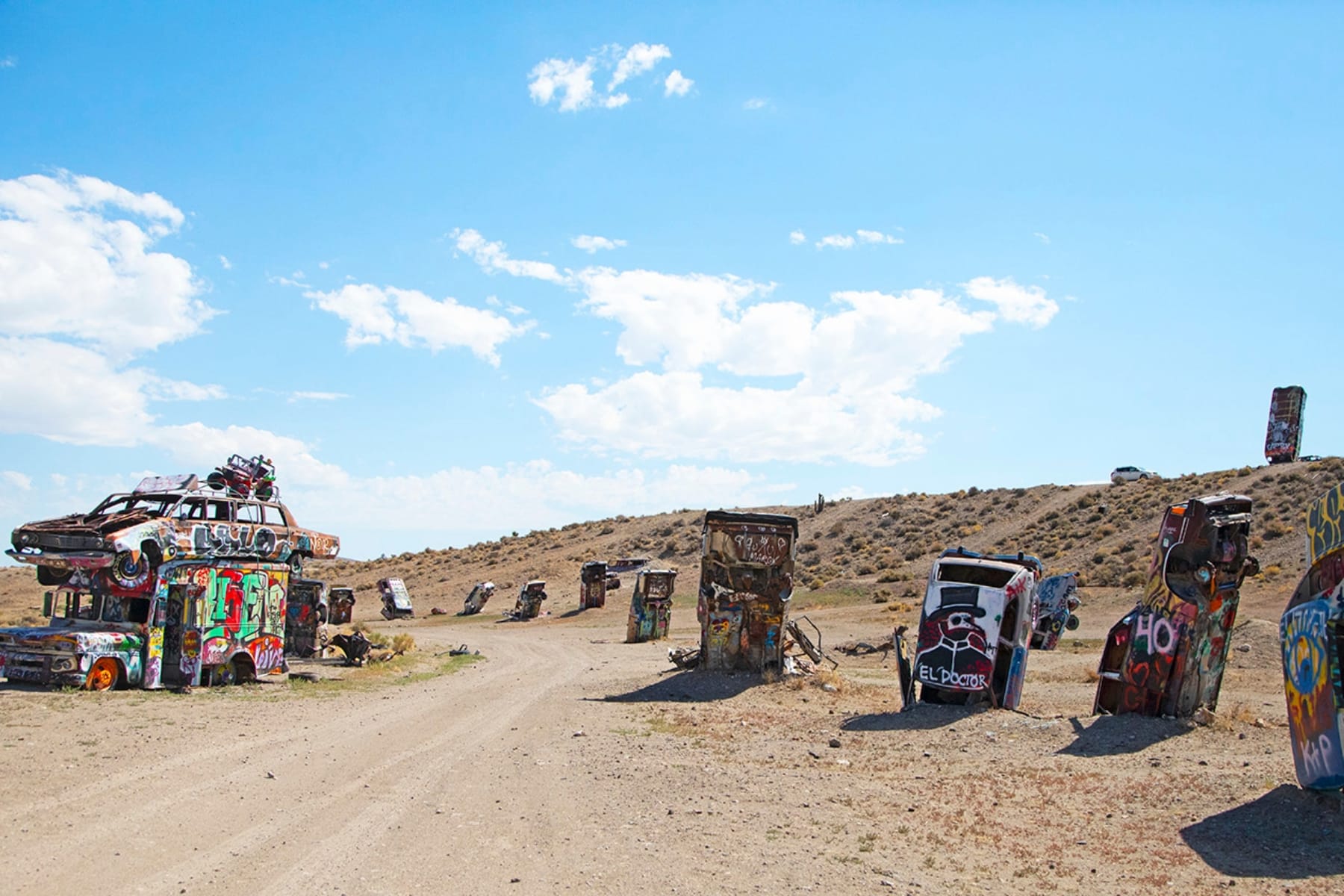
Gemfield, Nevada
Head off the beaten path down the gravel road to Gemfield, where rockhounding is ridiculously sparkly. This public dig site boasts the title of America’s largest deposit of gemstone-quality chalcedony. But that’s just the tip of the geode!
Unlike many rockhounding sites, Gemfield operates on a pay-to-dig system. For a small fee per pound of rocks collected, you can spend the day sifting through volcanic debris and uncovering your own personal stash of gems: no fancy equipment is needed, just a bucket, a hammer, and a keen eye.
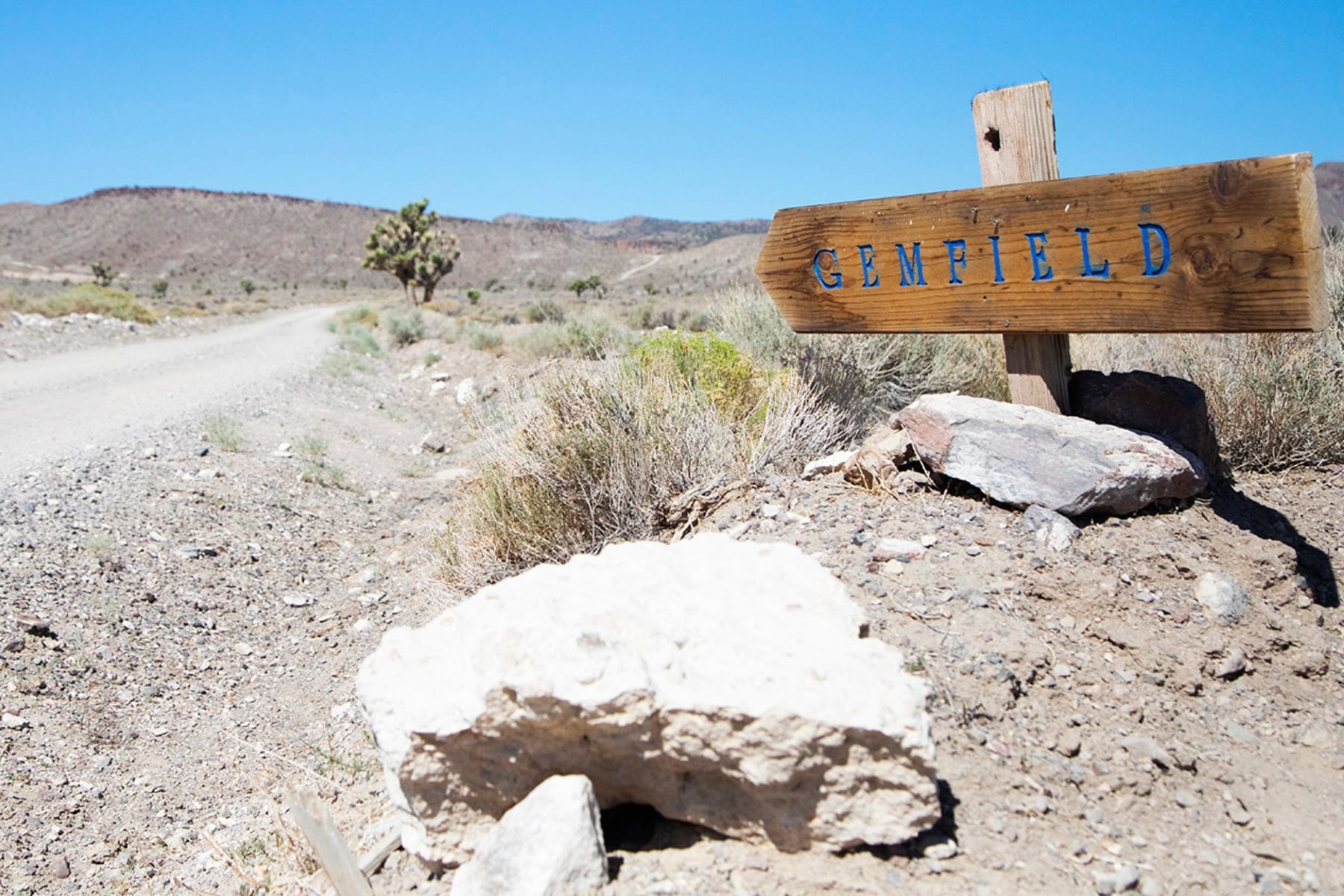
If you don’t want to dig, check out the shop with chalcedony stones to admire or purchase. If you’re wondering “What is chalcedony,” I get it – I didn’t know either until I came here. Chalcedony is a beautiful, semi-precious stone made of tiny quartz crystals all clumped together.
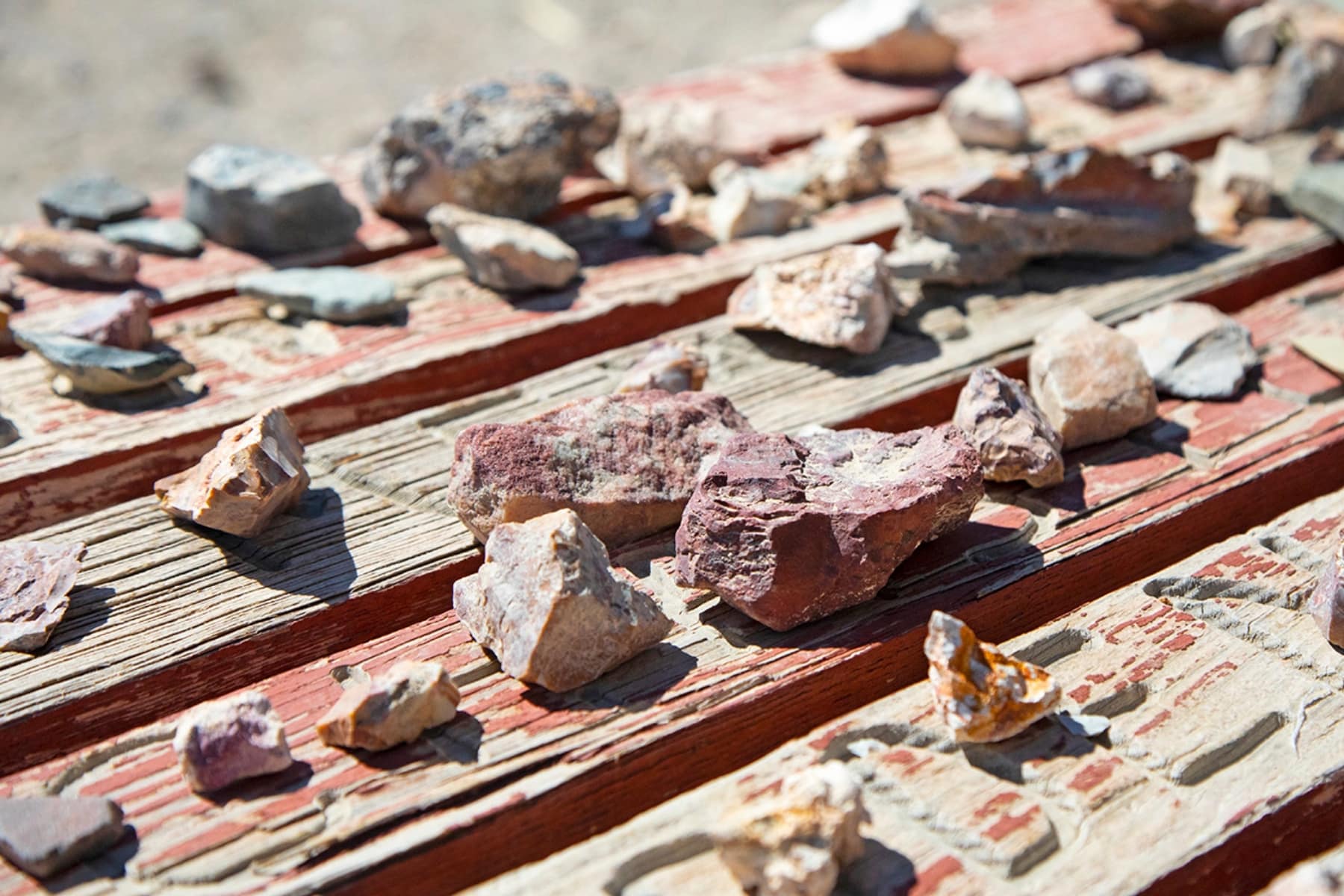
Tonopah
By the time the Dark Sky road trip brings you to Tonopah, you’ve traveled 103 miles and seen some pretty awesome sites in Nye and Esmerelda Counties. This is a great place to stop for the night, and a special astrotourism spot was built just for stargazing.
The Clair Blackburn Memorial Stargazing Park allows you to safely see the skies, with a concrete pavilion, benches, and room for telescopes. A dirt road goes beyond that, allowing for more space and seclusion if you prefer.
Tonopah’s (“TONE-uh-paw”) claim to fame came from a wayward donkey. A prospector, frustrated that his donkey wandered off, finally found the animal and threw a rock in frustration. Noticing the rock was heavier than he expected. That was the start of a giant ore mining industry that would now be worth more than $1.2 billion.
You can tour the Tonopah Mining Park on your Park to Park in the Dark road trip. Go even further back in time at the Central Nevada Museum, with pre-historic finds through modern times.
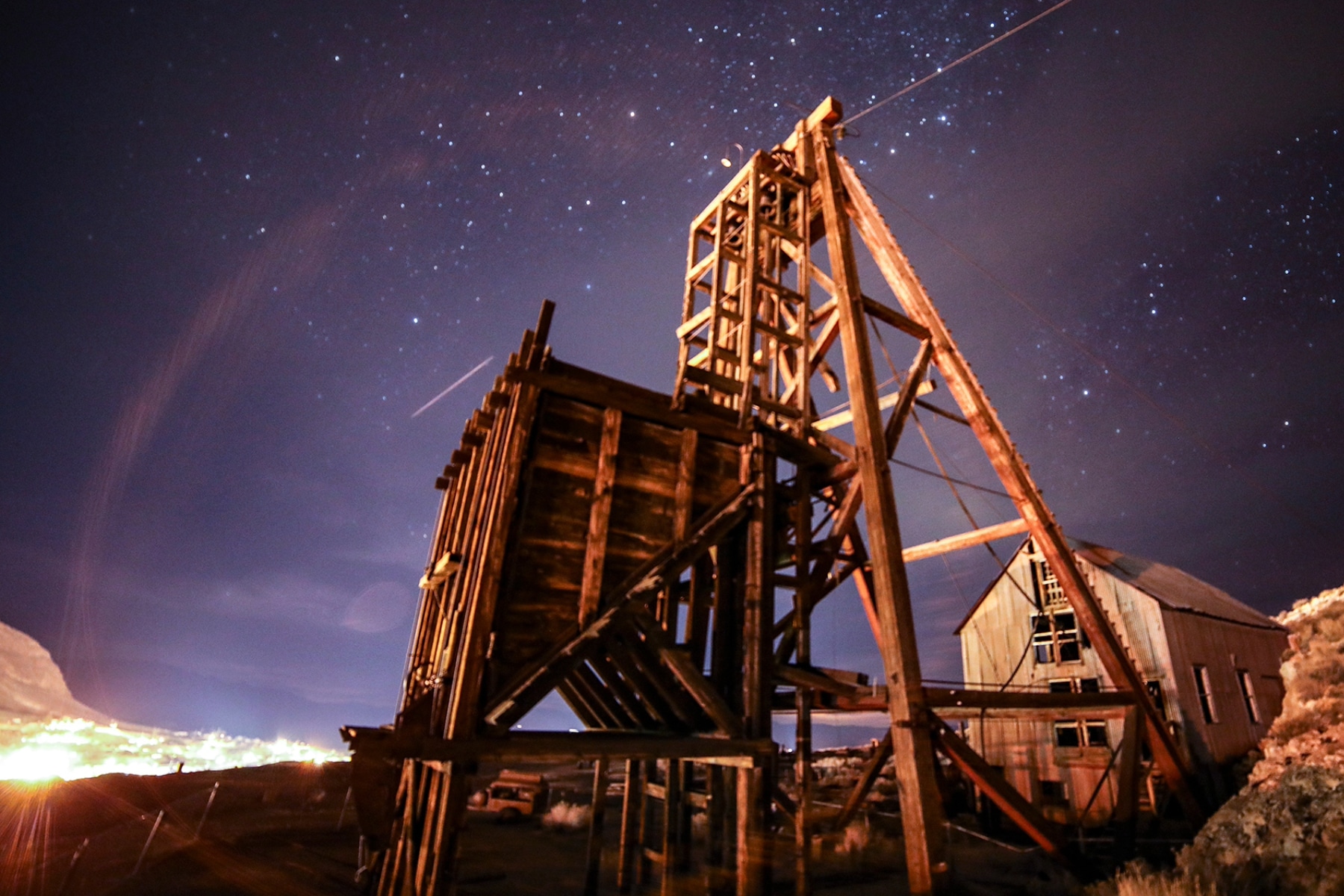
Where to Stay in Tonopah
If you know anything about Tonopah, you know I’m smirking when I say it’s a great idea to stay at the Clown Motel. Whether it’s the creepy vibes of being “America’s Scariest Motel” right next to a graveyard or the impressive collection of 5,000 clowns in the museum, it warrants at least a quick visit.
The historic Mizpah Hotel makes for one of the most authentic Tonopah overnight experiences. Long before the Las Vegas Strip normalized luxury hotels, The Mizpah was the fanciest place around.
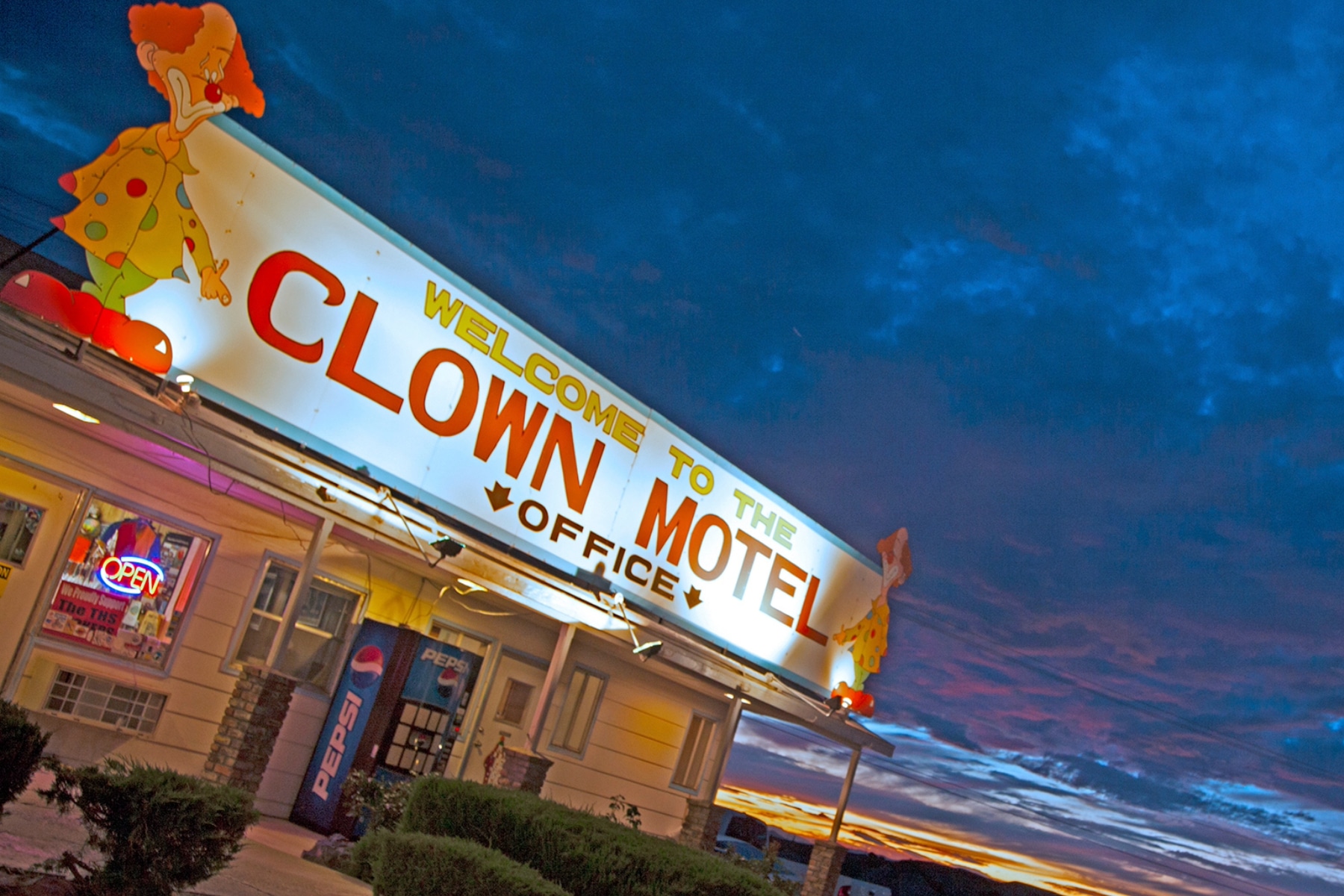
On the Road to Ely
Be sure to gas up and get snacks in Tonopah because a long road ahead without amenities unfolds in the Great Basin desert. You start east on Route 6, known as the Grand Army of the Republic Highway. It stretches from the tip of Cape Cod to Bishop, California – making it the second-longest highway in the country.
Highway 6 on the Dark Sky Park Road Trip
The 50-mile stretch is surrounded by raw, primal desert. For the adventure seekers reading this, know that this area is largely public land, ripe for isolation hiking, rock climbing, and mountain biking. Check out this map of OHV trails to explore in the remote desert.
To the north, explore the roads and peaks of Toiyabe Humboldt National Forest, including Mount Jefferson, the third-highest peak in the state and the tallest for 90 miles around. To the south is BLM land, with Kawich Peak being the tallest on the horizon.
Most lands allow primitive camping anywhere you please, making the night skies that much more of an intimate and exclusive experience.
TRAVEL TIP: These wilderness mountain roads will require a high-clearance vehicle. This offers a great time to learn about the Nevada Dirt Road Code.
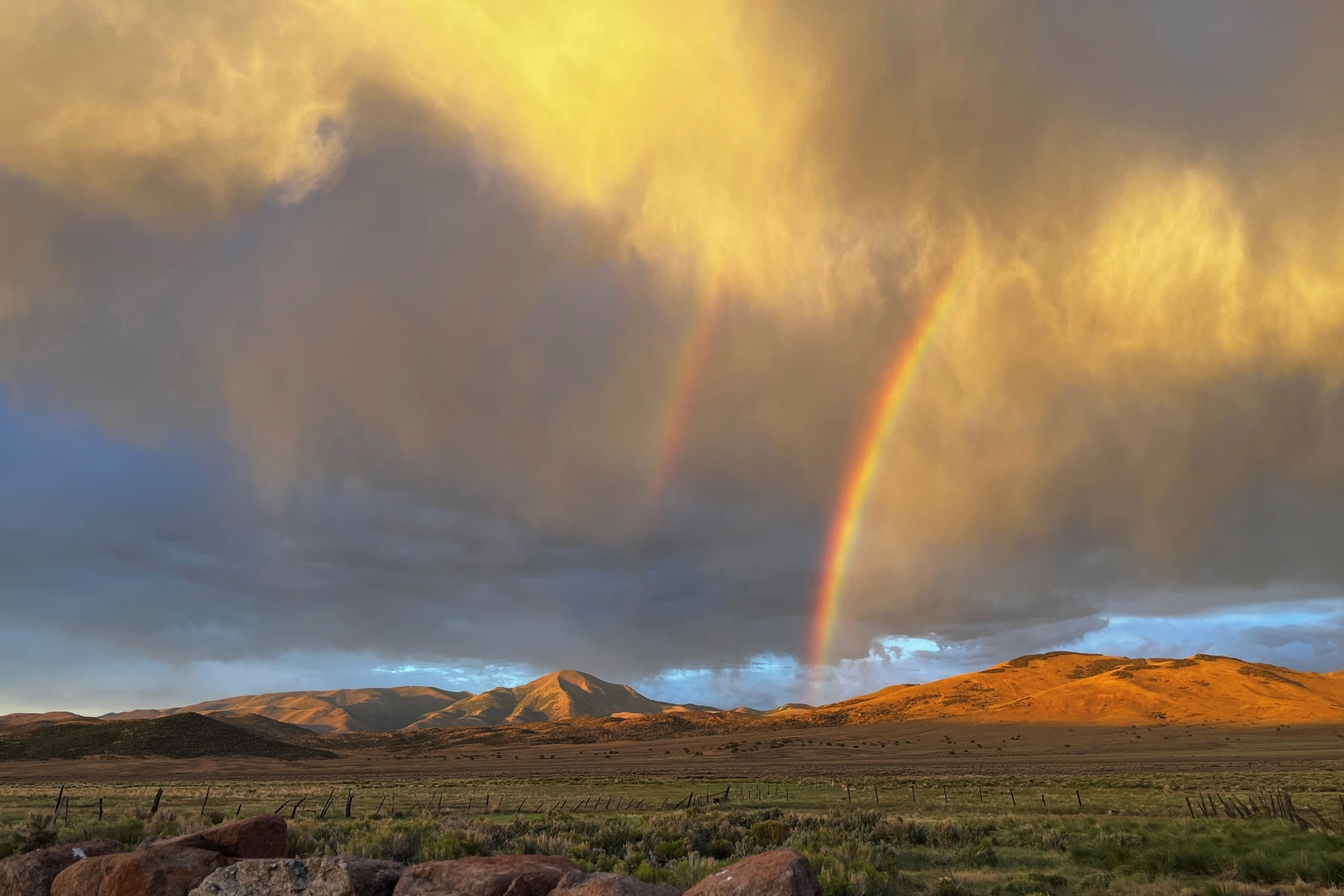
The Stargazing Fork in the Road
When you travel those 50 miles to Warm Springs, the Park to Park in the Dark road trip continues on Route 6. However, another road marked “Extraterrestial Highway” might pique your interest. On the loop I’m laying out for you to get back to Las Vegas, you’ll have a second opportunity on the ET Highway, so let’s talk about that quickly.
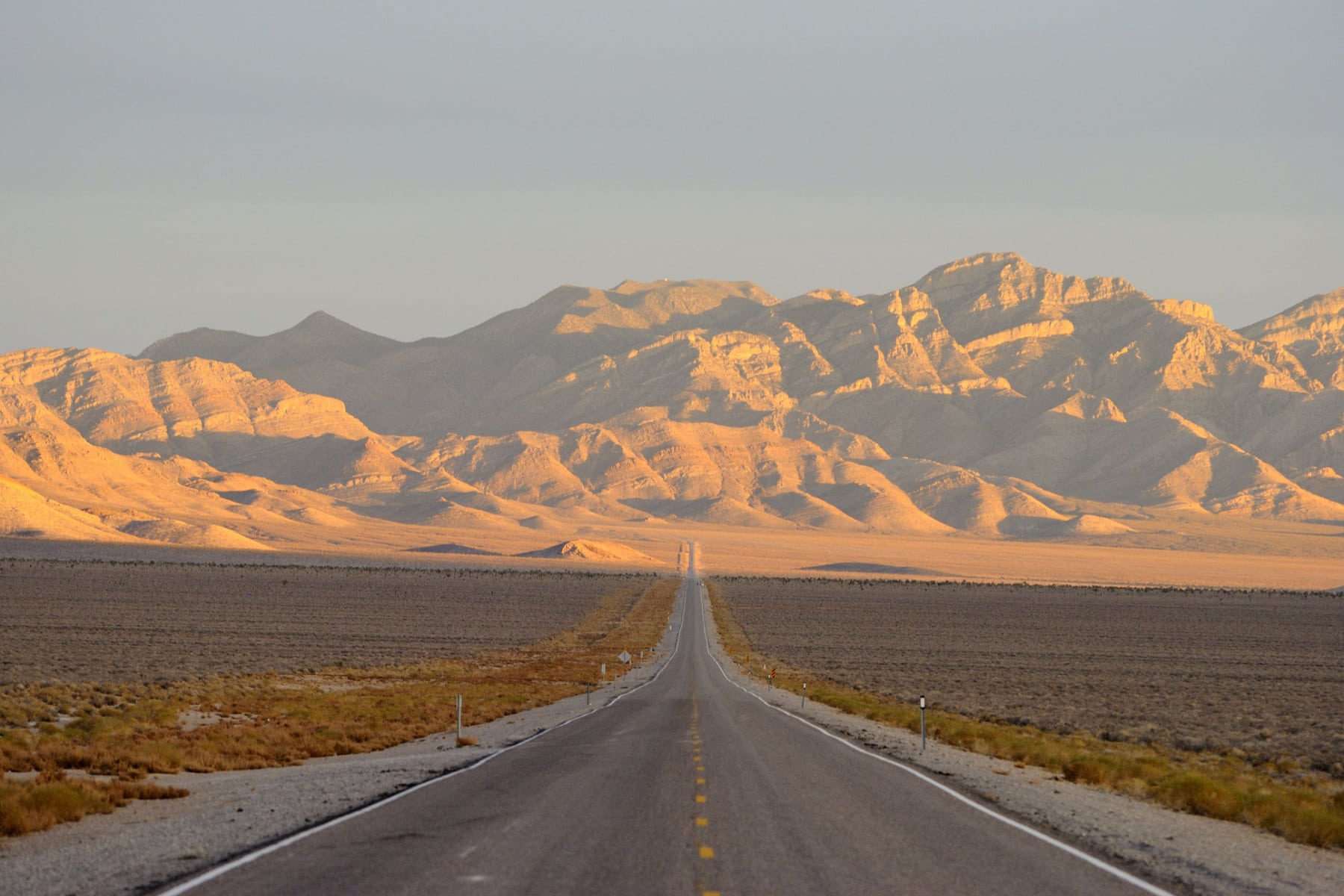
Extraterrestrial Highway in Nevada
Between Warm Springs and Crystal Springs, the 100-mile ET Highway runs through Rachel, Nevada.
Whether you’re a believer in extraterrestrial life or simply enjoy a good mystery, Rachel offers a unique and fascinating experience. With its proximity to Area 51, its rich history of UFO sightings, and its quirky alien-themed culture, Rachel is a place where imagination runs wild, and the stars seem just a little bit closer.
No, I am not going to tell you how to get to Area 51, and I strongly recommend you stay off any government property. Guards wait at every gate, and all boundaries are monitored with pretty intimidating warning signs.
That said, you’ll find plenty of businesses and people willing to talk about the mysteries of UFOs, odd night sky sightings, and Area 51 security close-call stories. Camping is available throughout this region.
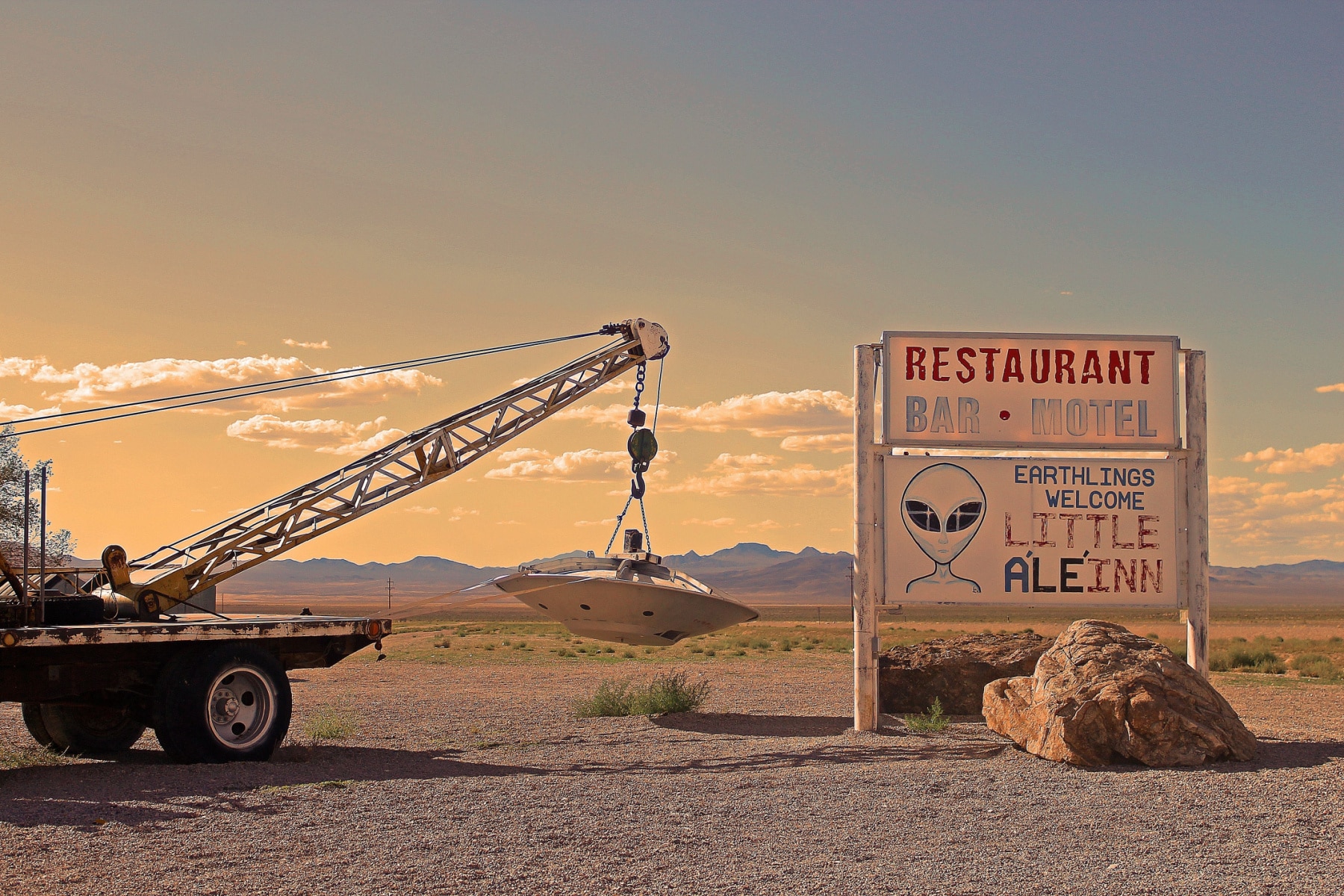
Warm Springs to Ely on Dark Park Road Trip
You’ll face another 120 miles of highway ahead of you when you stay on Highway 6 at the ET Highway. However, just 30 miles on the road, the surface of the moon awaits.
Lunar Crater Volcanic Field
Well, figuratively speaking, that is. The Lunar Crater Volcanic Field National Natural Landmark is on BLM land. In the late 1960s, NASA used the Lunar Crater Volcanic Field to train astronauts for the Apollo missions.
The terrain’s resemblance to the Moon’s surface made it an ideal training ground for lunar exploration. Astronauts practiced recognizing geological features and even conducted simulated rover traverses.
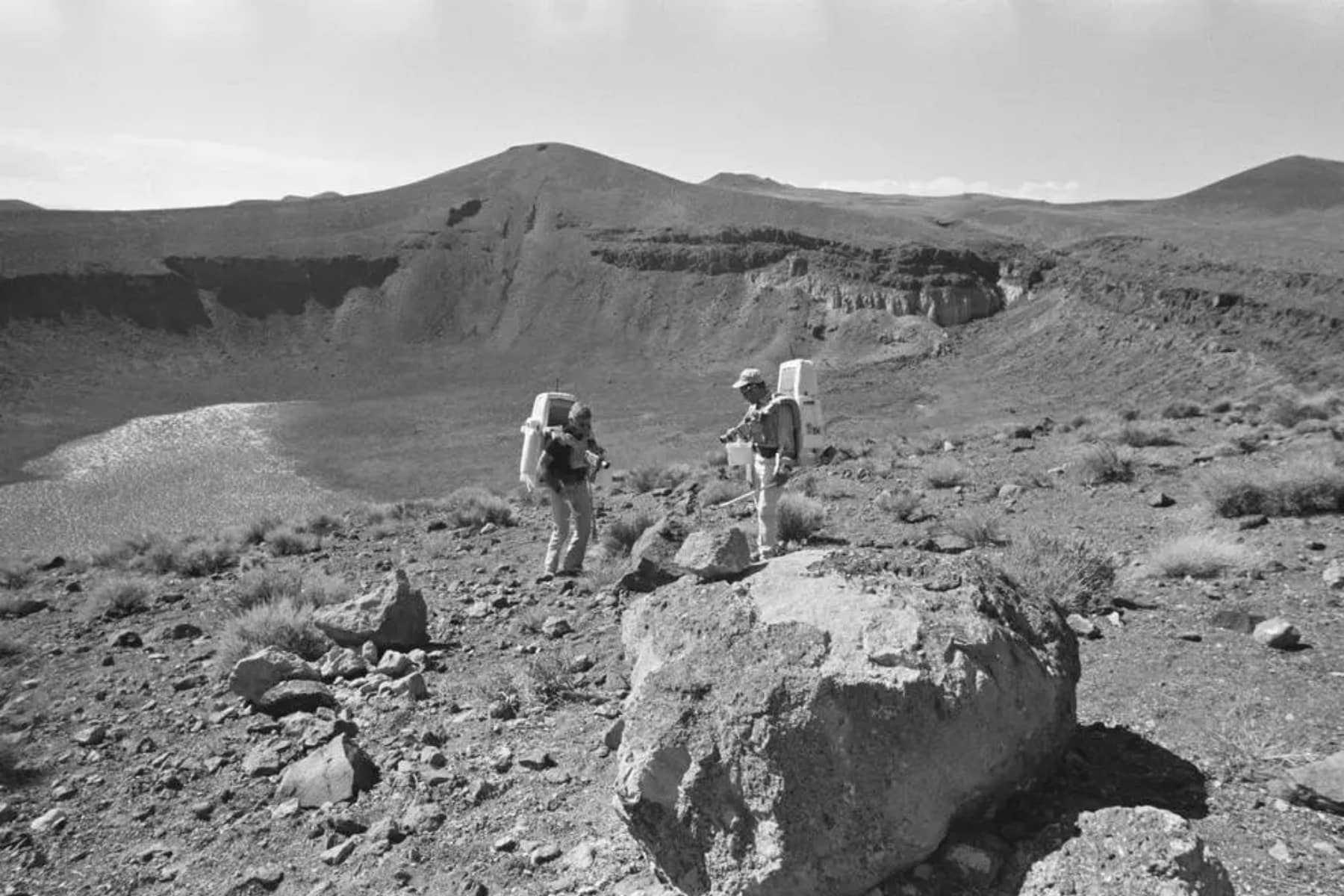
Schmitt, during the geology field trip in 1972.
Dispersed camping and boondocking are allowed. I can’t think of a more unique place to enjoy the night skies than where astronauts trained to walk on the moon. For those who want to stick close to Route 6, the Black Rock Lava Flow is less than a mile from the highway.
The Lunar Crater Backcountry Byway, a 24-mile scenic loop, takes visitors past the main crater and other interesting formations. The byway is suitable for most vehicles, but high-clearance vehicles are recommended for some sections.
More Wildlife, Rock Climbing, and Hiking
A rock climbing spot known as “The Wall” is in this region as well. Wildlife fans will find a surprising oasis at Railroad Valley Wildlife Management Area a few miles closer to Ely.
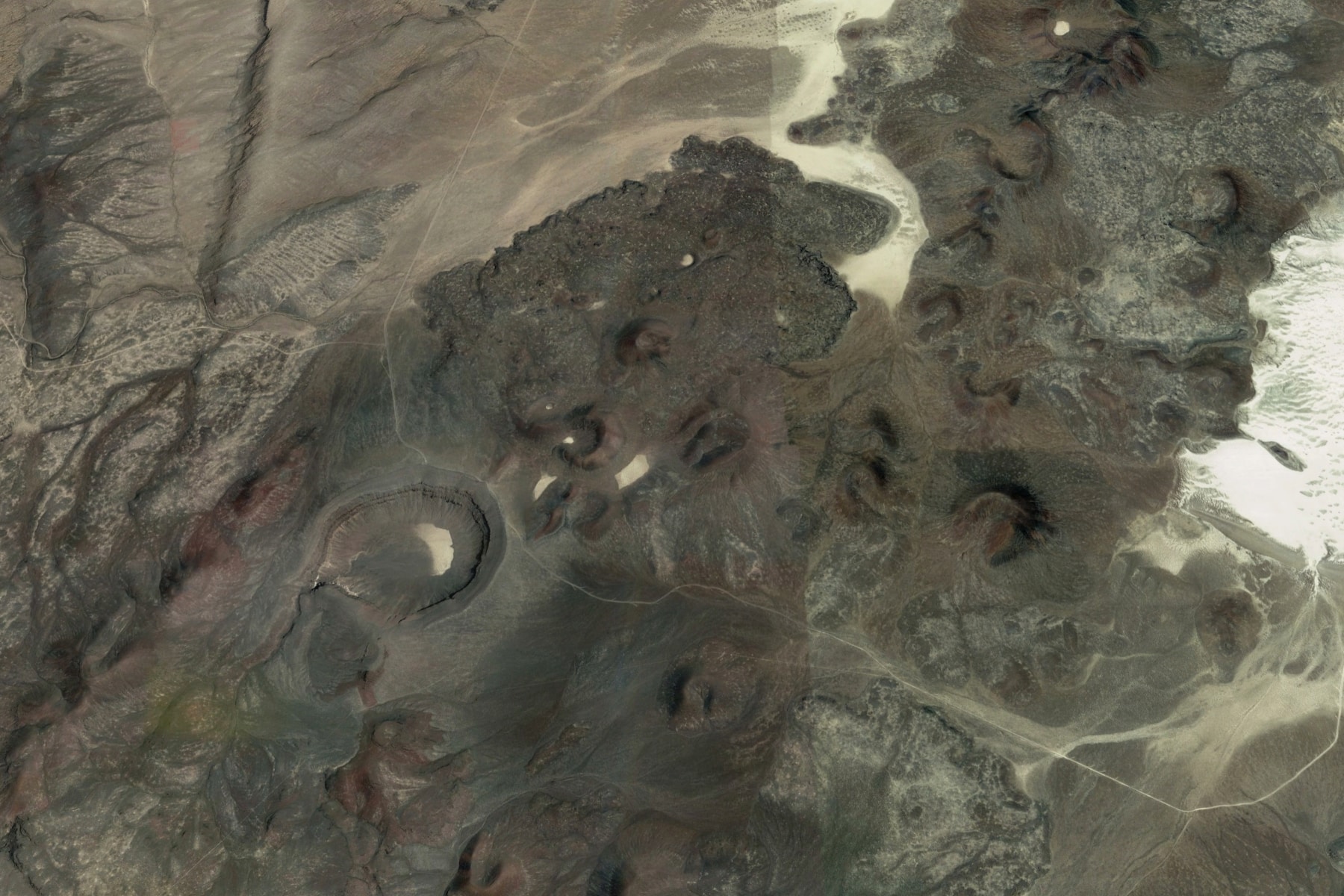
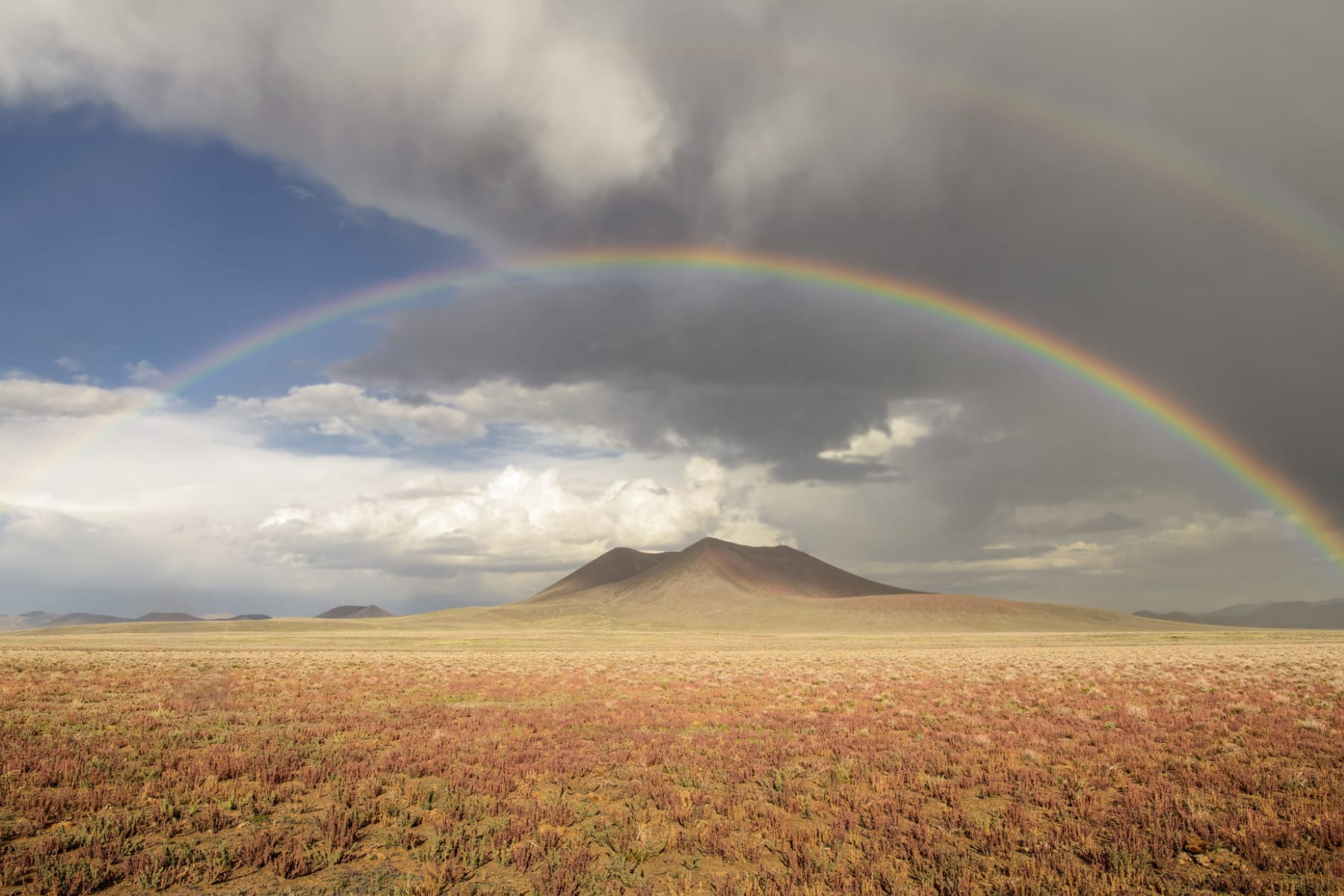
Ely Dark Sky Park Road Trip Stop Options
The longest part of the journey ends with the arrival in Ely, where more stargazing and dark sky activities begin. Ely’s connecting road to Great Basin National Park takes about an hour, but don’t drive through this unique town.
Ely (“Eee-lee”) sits at the eastern edge of the Loneliest Road in America, sarcastically named by Life magazine in the 80s, but the tourism teams ran with it.
ELEVATION: Ely sits at 6,437 feet above sea level, and that’s before you climb any of the hills and mountains around. Weather will be drastically different here compared to Death Valley National Park.
Best Stargazing Locations in Ely
Ely is a mining town, and the Nevada Northern Railway is its pride and joy.
The railroad offers Dark Sky rides on the Great Basin Star Train. These rides book up to a year ahead of time, so don’t expect day-of tickets.
Visit White Pine Public Museum to get a dose of history before heading out for one of the great night sky viewing locations in and around Ely.
Cave Lake State Park includes four seasons of recreation with some great trout fishing. Ward Charcoal Ovens State Park also offers unique photo opportunities under the night skies.
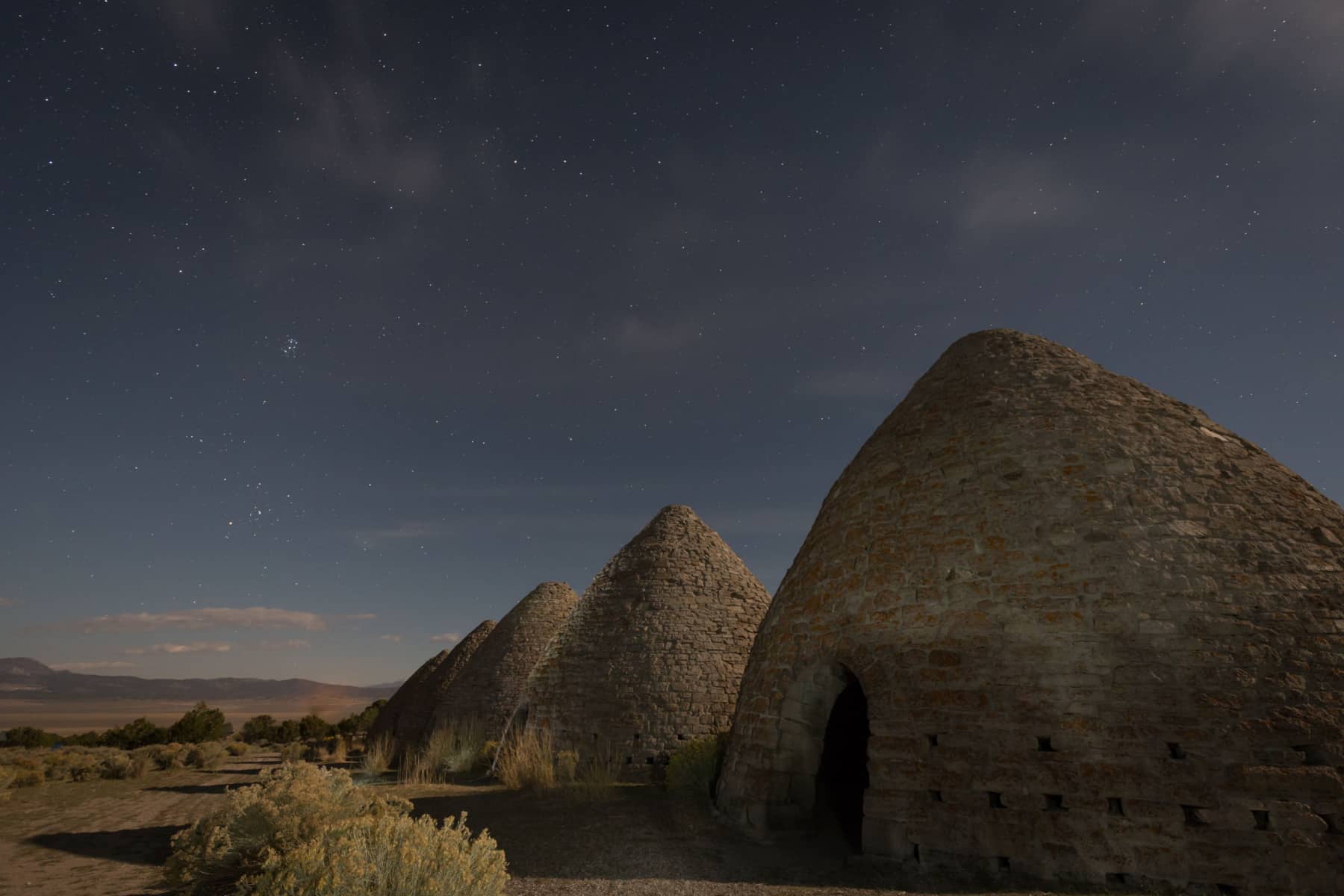
Things to Do in Ely
During the day, Ely’s small-town Western vibe brings big opportunities. Rockhounders head to Garnet Hill in the BLM Ely District, the only designated place to leave a trace. Among the volcanic remnants, the shiny red minerals can be dug from the earth using hand tools.
With January being a great month to visit Death Valley National Park, time your Park to Park in the Dark road trip to get to Ely during the Fire & Ice Winter Festival. Runners should visit in September, another great month to drive across Nevada for the Race the Trails event, where you run alongside a steam engine.
Walk through the charming downtown area and see the public art and specialty shops. Even if you can’t get a night train ride, the Nevada Northern Railway Museum is a must-see.
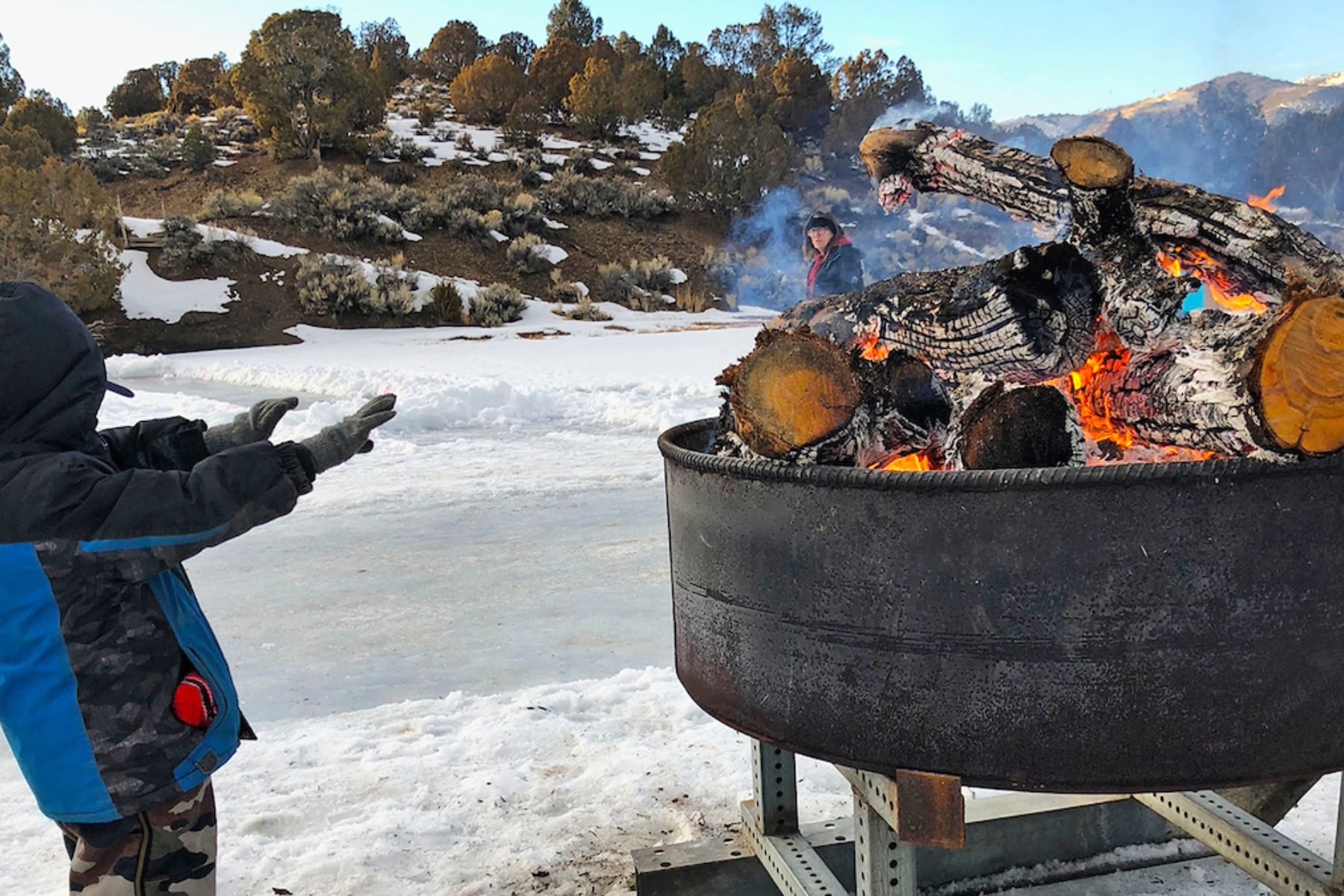
Baker: Gateway to Great Basin National Park
About an hour from Ely on the Great Basin Highway, you’ll reach Baker. If you go past the exit, turn around at the state line to Utah, four miles up the road.
Great Basin National Park Visitor Center sits just outside Baker, and you want to stop by for a few reasons:
- Those traveling with kids should get a Junior Ranger Night Explorer Booklet to complete. Once all the tasks are accomplished, the child gets a badge.
- Explore the sun during the daytime at the Solar Scopes. Rangers help guests use the solar telescope to get a closer look at the massive ball of fire we call the Sun.
- Check the calendar for astronomy programs and get an update from the rangers on the event while you’re there. Between Memorial Day and Labor, events are held several times a week.
STAR PROGRAMS: Astronomy programs are free at Great Basin National Park, but you can’t reserve a spot. Once capacity is filled (if it gets filled), the gates to the program location are closed.
Baker Archeological Site is nearby, and you can learn more about that before deciding if you want to add it to the Great Basin National Park itinerary. BLM manages that land. Stargazing is allowed here.
We put together an overview of how things to do at Great Basin National Park. Tap on the photo below for more information.
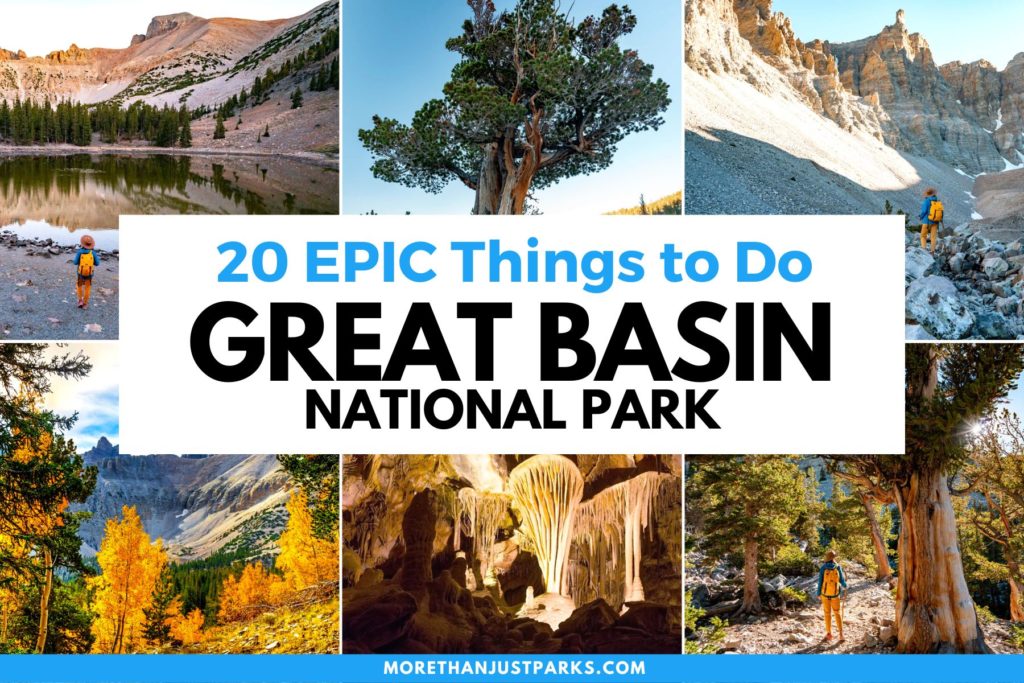
Stargazing at Great Basin National Park
Great Basin National Park ranks among the Top 10 Least Visited Parks in the country and the second-least visited when you take away Alaska parks and island parks. That means you’ll have plenty of room to soak in the night skies.
The Great Basin Astronomy Festival happens annually in September.
One of the best stargazing locations in Great Basin National Park is the Lehman Caves Visitor Center, where an astronomy amphitheater is located. Even when a program isn’t being held, you can still enjoy the views. Mather Overlook on Wheeler Peak is another star-studded stopping point.
No fees are charged to enter Great Basin National Park. Lehman Caves is the only area that requires a fee to access for day-use. Cave access restrictions prevent you from touring on your own. Book a ranger tour well ahead of time, as these often sell out. Prices range from $5-$15.
Camping Under the Stars at Great Basin National Park
Campsites offer another great way to get unlimited views of the sky, with Great Basin National Park hosting five development camping locations. No more than three tents or 24 people can be at any campsite location, providing an even more intimate stargazing experience. Between October and May, Lower Lehman Creek is the only open campground.
CAMPING TIP: Don’t let the “least-visited” status fool you – campsites here can fill up quickly. Make a reservation at your preferred site as soon as you plan your Dark Sky Park road trip. Check out these backup camping options nearby as well.
Should you wish to stick with the astrotourism theme, Baker is home to the Stargazer Inn.
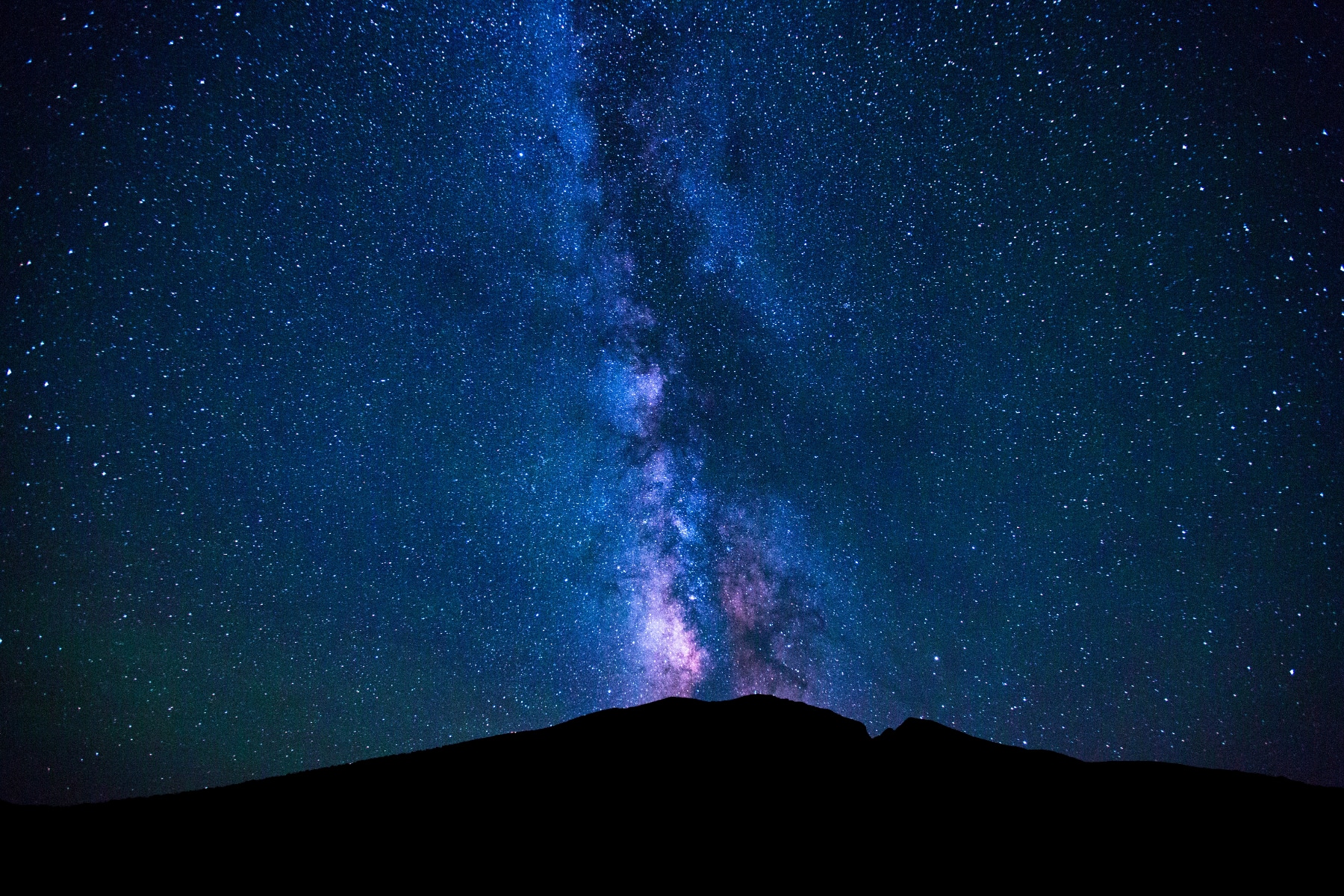
Best Time for Park to Park in the Dark Road Trip
The nuance of this trip comes with balancing the heat of Death Valley and the winter of Great Basin National Park. Then there are the monsoons of summer to consider, which can cause road and park closures.
All things considered, mid-to-late May and September would be the ideal months to enjoy moderate weather on each end of the Dark Sky Park Road Trip.
Other factors to consider include:
- New Moon: The absolute best time for stargazing in Nevada is during a new moon phase when the moon’s light is completely absent. This allows for the faintest stars and constellations to shine through, revealing the Milky Way in all its glory.
- Clear Skies: Unlike some other locations in the country, storms and cloud cover in Nevada rarely stay around long. That said, spring and fall bring the best chances for clear skies. However, check the Clear Dark Sky website to route out the best stops for pristine skies during your trip.
- Meteor Showers: Check out NASA’s latest guide for when peak meteor showers will happen. The Geminid Meteor Shower (late summer) and Geminids Meteor Shower (December) are two of the most impressive in Nevada.
Enjoying this trip means more than just nighttime activities. It’s worth noting that both Death Valley and Great Basin display stunning wildflowers throughout late spring. Great Basin’s bloom goes well into the summer.
Maybe you’ll spot some purple-hued flowers called Jeffrey’s Shooting Stars.
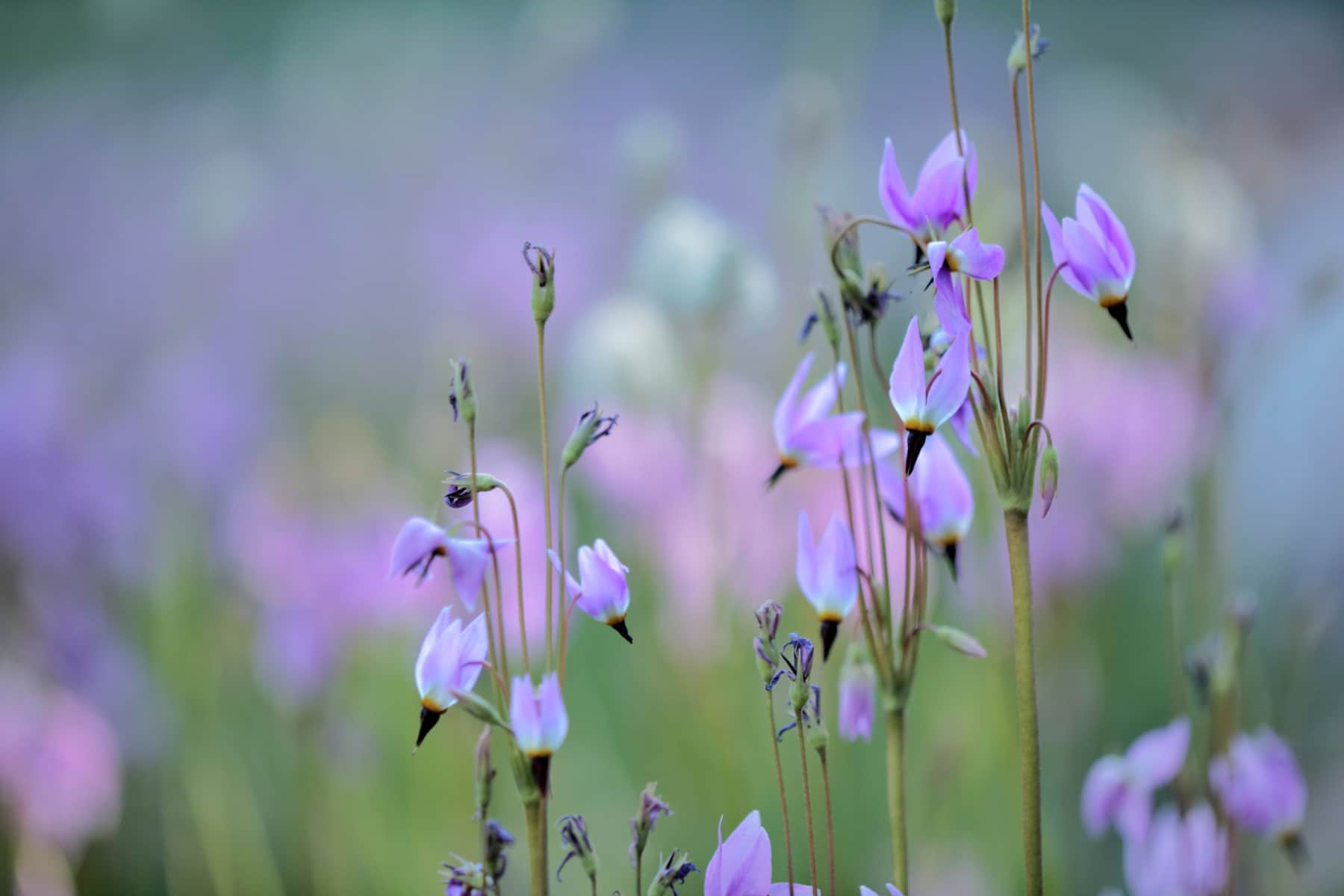
Dark Sky Park Road Trip Return Trip
Once completed, the Park to Park in the Dark road trip official itinerary stops. However, let’s explore the options that come with taking the Great Basin Highway back to Las Vegas.
Panaca Moon Cave
You’ll only need to backtrack 35 miles to reach the longest stretch of Highway 93. For 130 miles, you’ll have unobstructed views day and night. Keeping with our “Out of this World” theme, stop in Panaca (“puh-KNOCK-uh”) at Cathedral Gorge State Park.
Walk through the otherwordly Moon Caves, which are unique and narrow slot canyons.
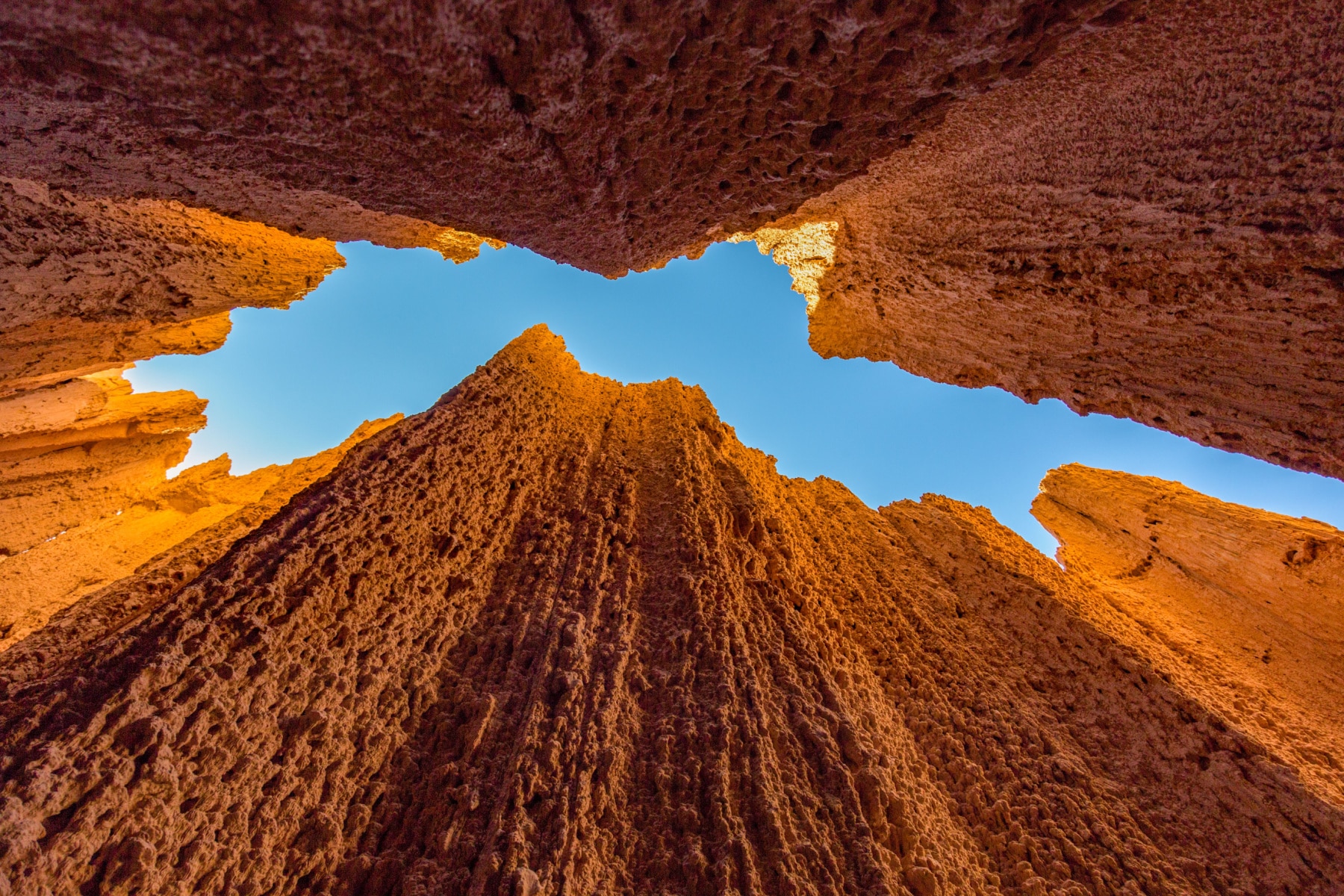


Caliente
Fans of Western author Zane Gray will recognize this town as Caliente inspired him time and time again. Impressive roses line the main drag through town, while outdoor trails lead in all directions. Five state parks are within 50 miles, and mountain bikers flock to this nook of Lincoln County.
Rock climbers can mix in stunning night skies with daytime climbing at Big Rocks Wilderness, nicknamed “The Mecca.” Plenty of big boulders make scrambling fun, too. Campsites and fire rings are available, but don’t expect amenities or facilities.
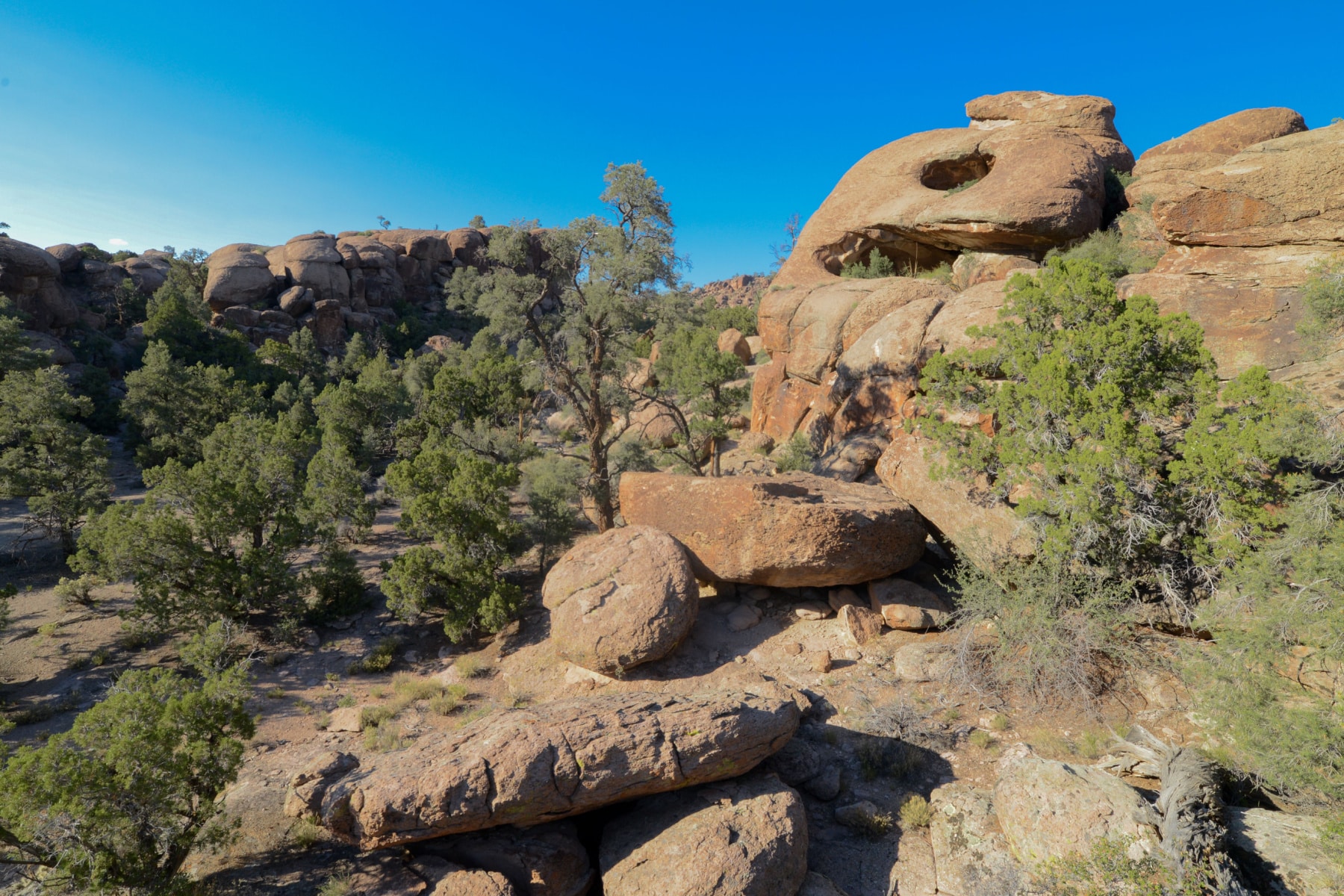
Dark Sky Park Road Trip Final Stretch
Less than 45 minutes west of Caliente is Crystal Springs and Hiko, where you can opt to take the southern leg of the ET Highway to Rachel.
However, Hiko is home to the Alien Research Center, so you still get a fill of UFO novelties. The center doubles as a stargazing spot. You’ll hear many conspiracy theories here, as one entrance to Area 51 is just 20 miles away. No, I’m still not going to tell you how to get there.
From there, you’re just 90 minutes until you’re back in Las Vegas, under the neon lights.
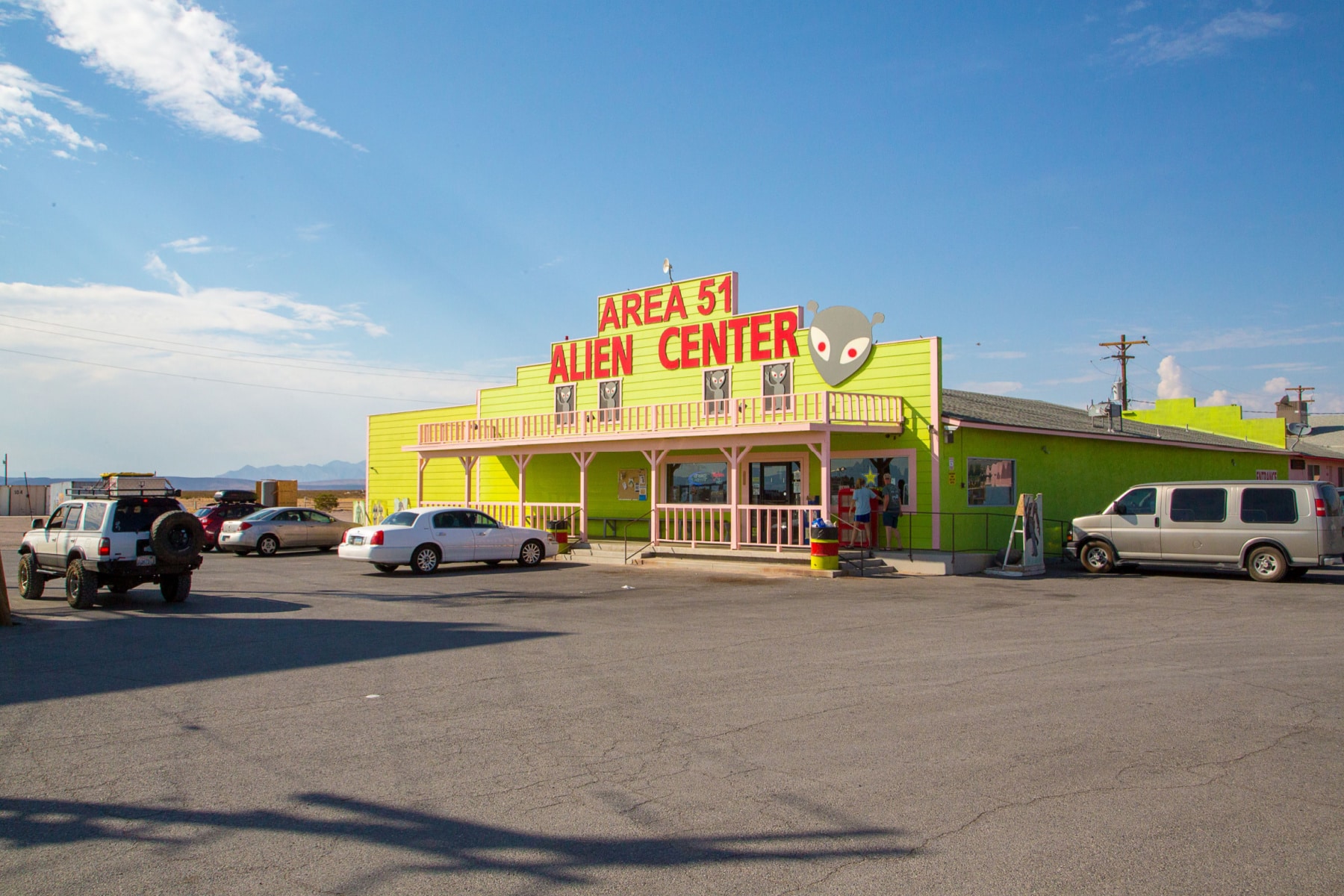
Pin Dark Sky Park Road Trip
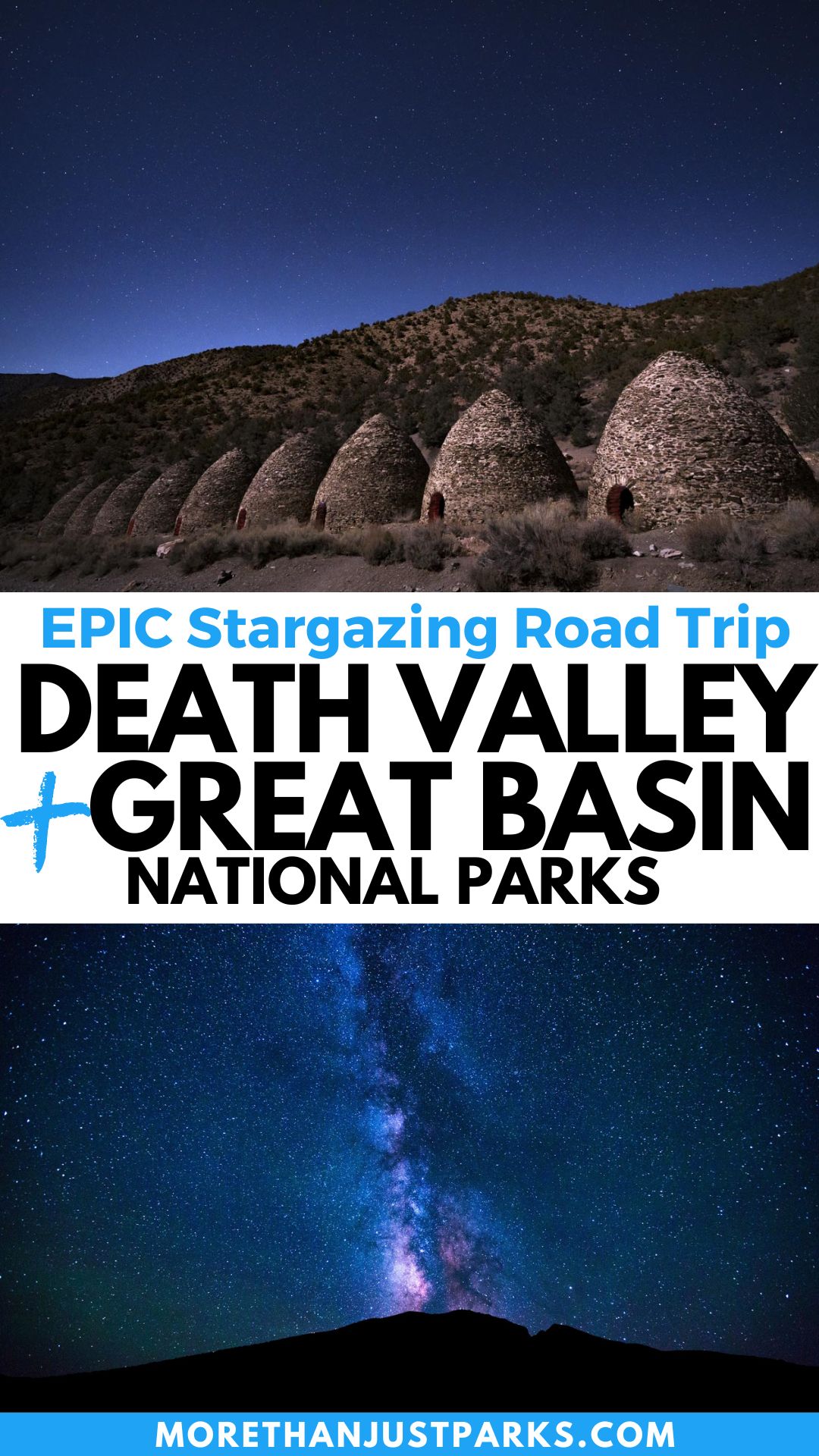

Helpful Related Links
More Time in Vegas?: 9 BEST National Parks Near Las Vegas, Nevada (Helpful Guide + Photos)
Love Landmarks?: 15 MUST-SEE Las Vegas Landmarks (Expert Guide + Photos)
National Parks Near Nevada: 7 AMAZING Nevada National Parks to Visit (Photos + Helpful Guide)
Historic Sites in Nevada: 10 MUST-SEE Historic Sites In Nevada (Guide + Photos)
Best National Parks Ranked: ALL 63 US NATIONAL PARKS RANKED By Experts
Free Downloadable National Parks Map & List: LIST & MAP of National Parks By State (+ Printable Checklist)
Best National Monuments: All 128 US National Monuments Ranked (Best to Worst)
Best National Parks to Visit: 20 Best National Parks to Visit 2023
Largest National Parks: 15 Largest National Parks in the United States (+ Full List)
Most Visited National Parks: Top 10 Most Visited US National Parks
Least Visited National Parks: Top 10 Least Visited National Parks
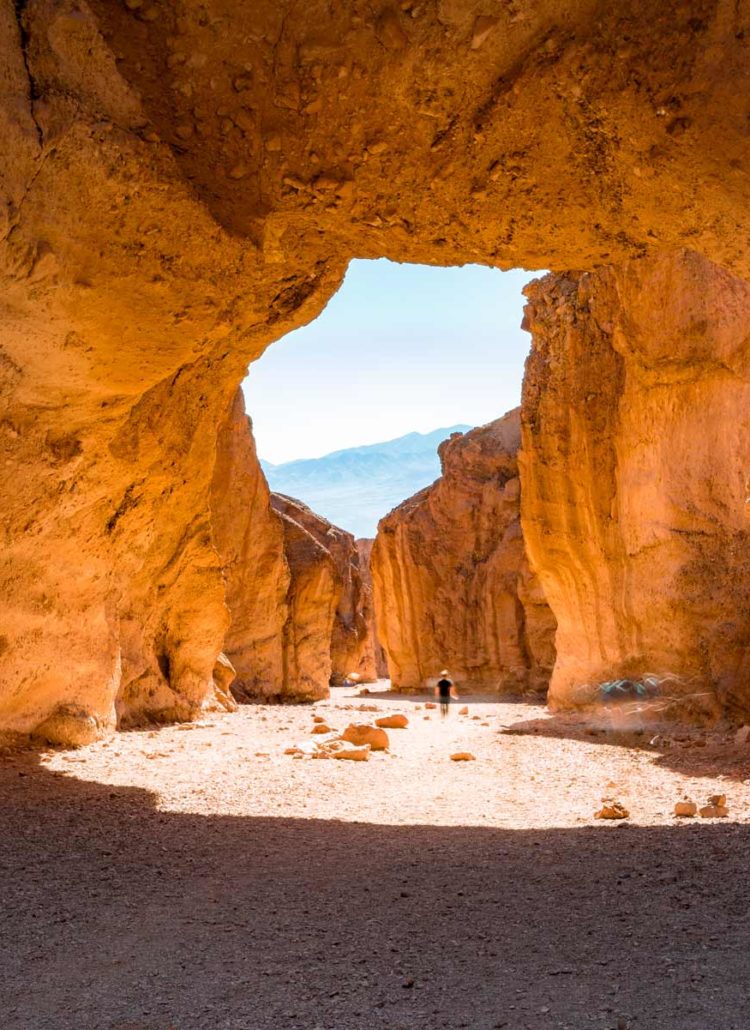
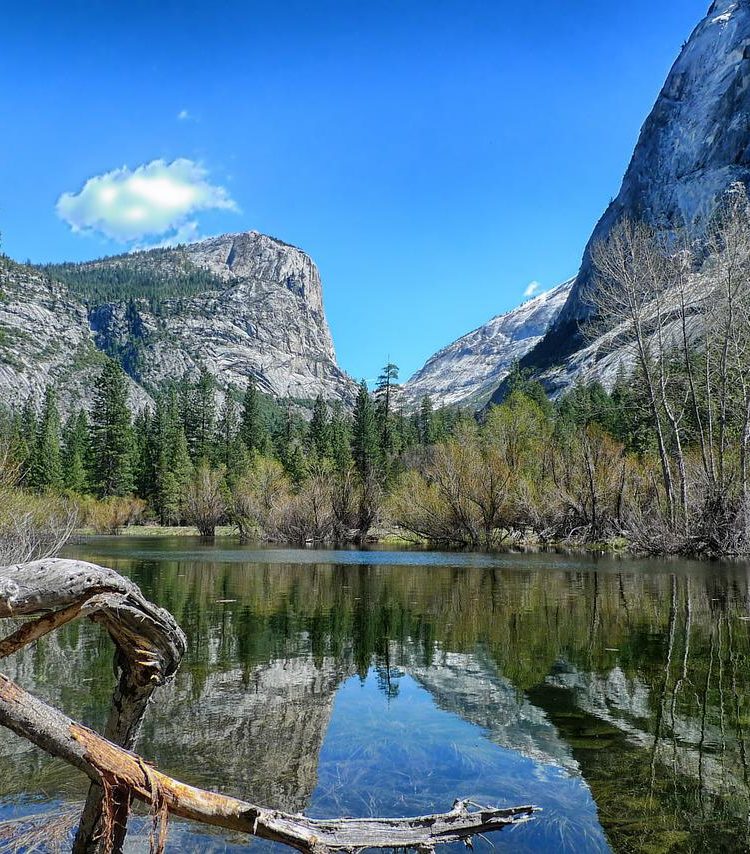
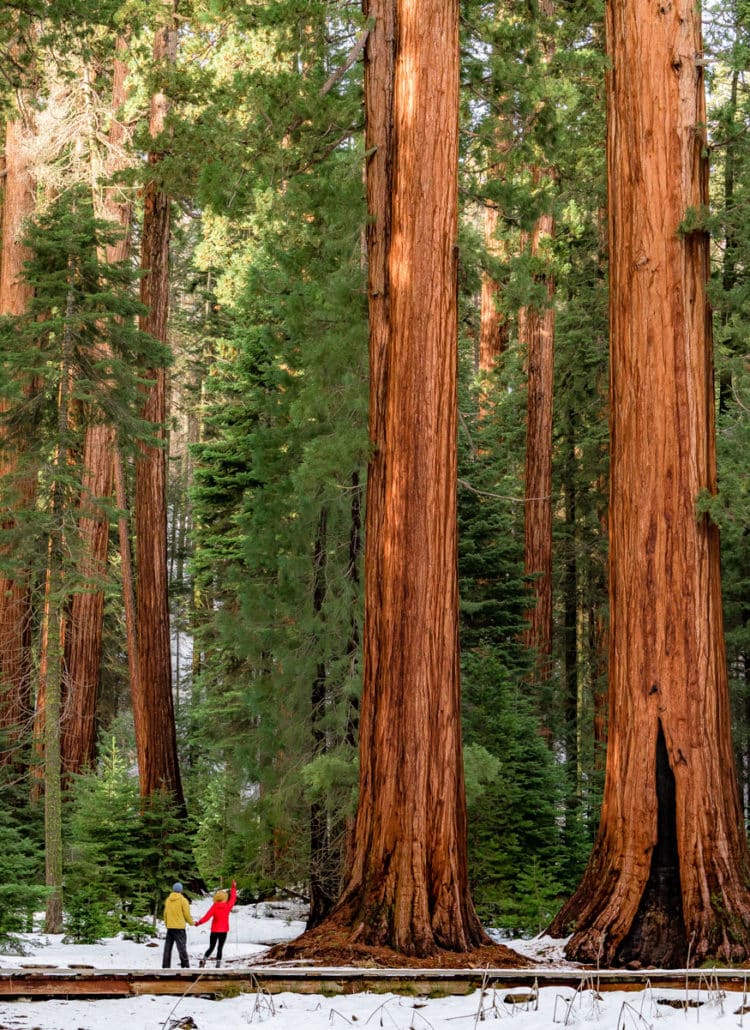

Leave a Reply